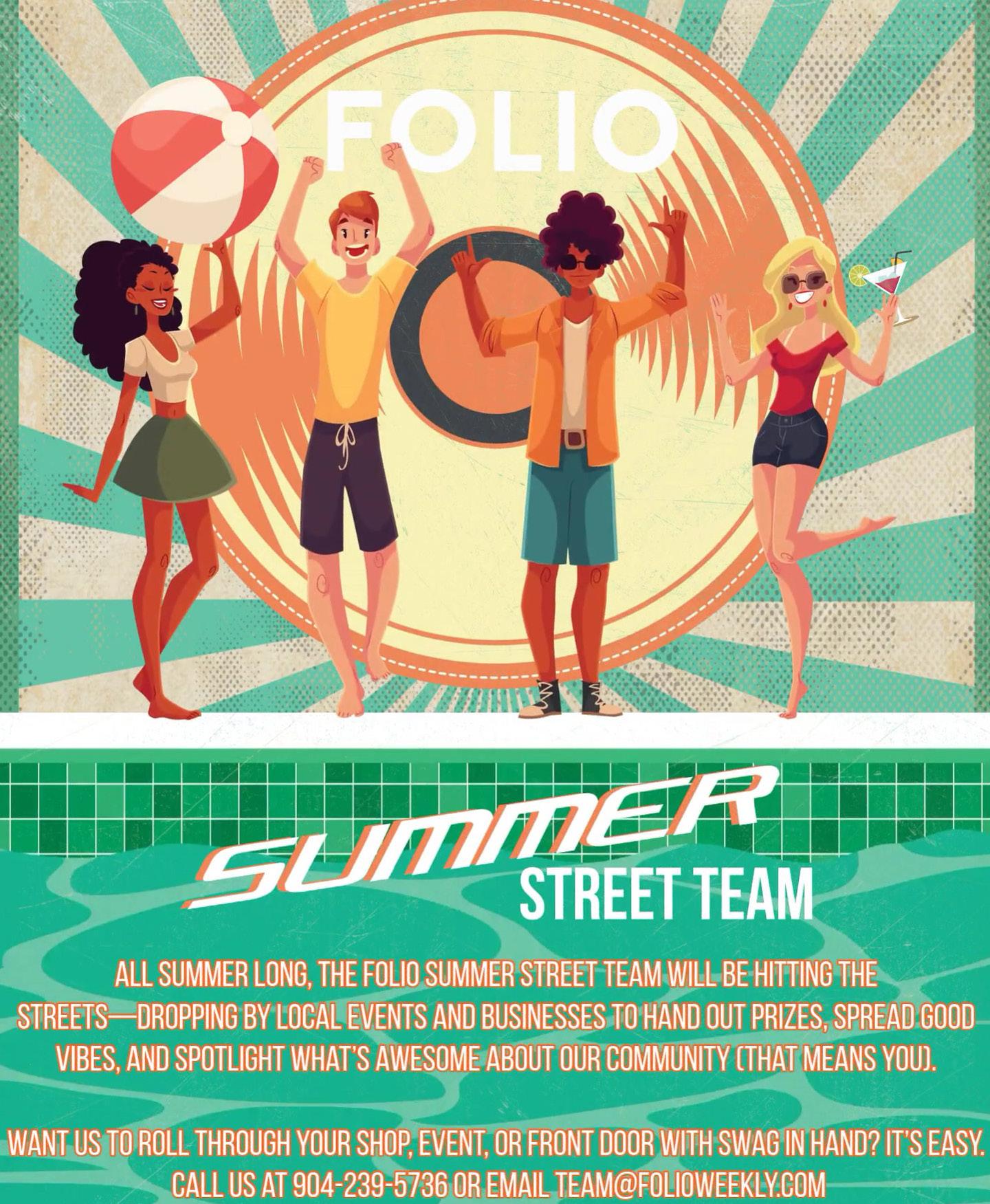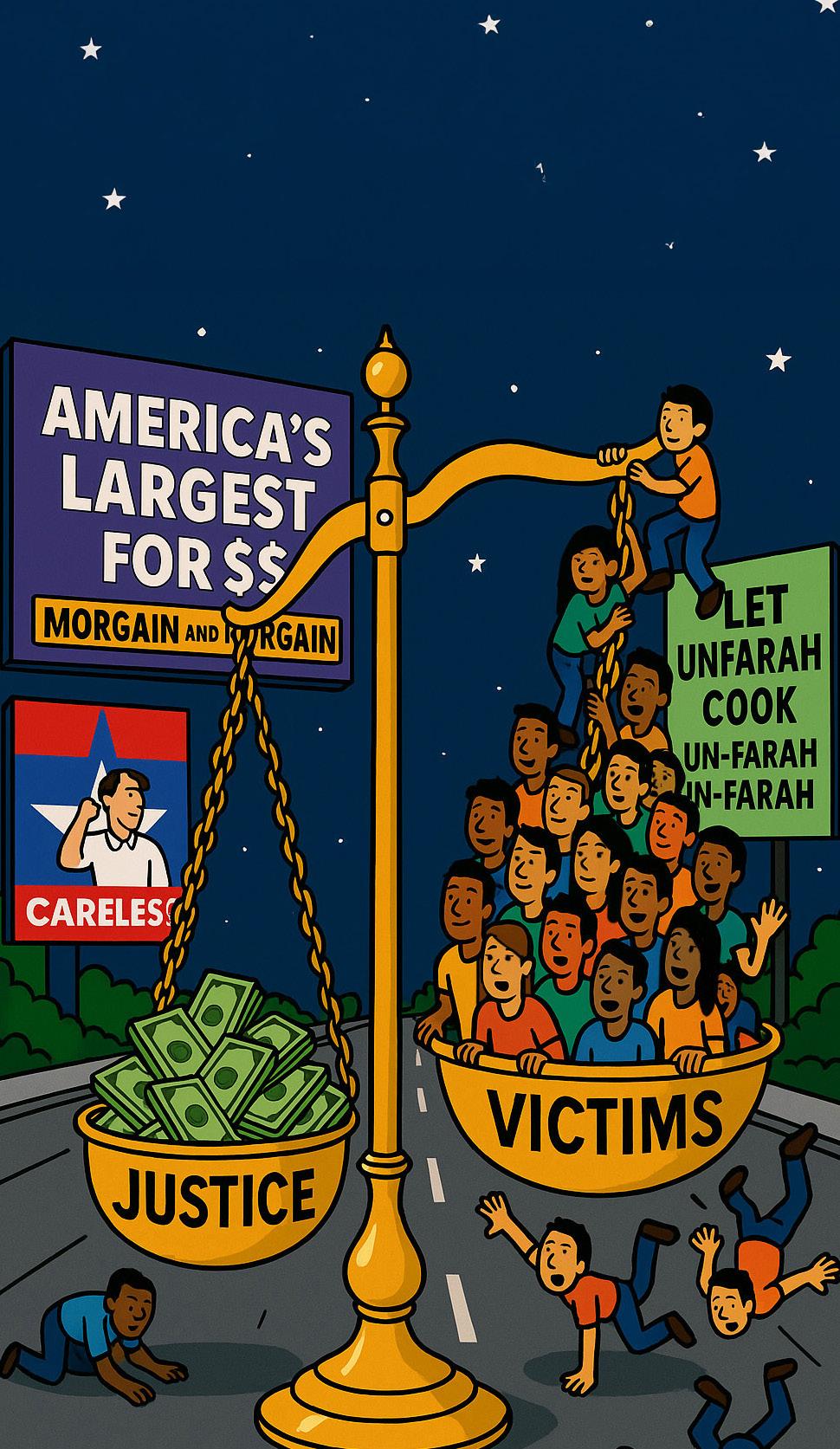
20 ROADS TO RICHES

Ambar
Ambar
The South Got Somethin’ to Say
Carmen Macri
Amiyah
Florida’s First Coast Region is Unprepared for the Future
Kaleb Mantela
Summer on the St. Johns River
Kaili Cochran
Carmen Macri
Carmen Macri
BEHIND



Ambar
Ambar
The South Got Somethin’ to Say
Carmen Macri
Amiyah
Florida’s First Coast Region is Unprepared for the Future
Kaleb Mantela
Summer on the St. Johns River
Kaili Cochran
Carmen Macri
Carmen Macri
BEHIND





TERESA SPENCER General Manager
KERRY
AMBAR RAMIREZ Creative Director
CARMEN

AMIYAH GOLDEN Writer/Photographer
KAILI COCHRAN Writer/Designer
KALEB MANTELA Contributor
DALE RATERMAN Crossword Curator
SHELTON HULL
Cover
Cover by Carmen Macri and John Lawless


Subject: Letter regarding the City Council’s AP Farce and Ultra-Hyprocite Rory Diamond
Recently, our City Council failed to pass an emergency resolution supporting state funding for education acceleration programs such as Advanced Placement (AP), International Baccalaureate (IB), and Dual Enrollment.
Council Members Carlucci and Pelusa introduced this resolution after local high school students asked the Council to take a stand against a state funding cut that would eliminate $8 million in local funding for these programs, which saved the students money by allowing them to complete 1 or 2 years of college before they even entered college.
However, the resolution failed to get the required 13 votes. Council Members Carrico, Salem, Diamond, Gay, J. Carlucci, and Miller voted against the resolution.
Scan QR code to read the rest of this months mail!
Terry D. Bork


To Representative Angie Nixon for calling out UNF and urging them to protect their students rather than collaborate with ICE under the Trump administration’s heavy-handed crackdown. Florida’s universities should be sanctuaries of learning, not outposts of federal enforcement.
To Electrician’s Mate 2nd Class Sarah Svejkovsky, named Sailor of the Year — a distinction that honors excellence, leadership, and integrity in the U.S. Navy. Thank you for your service and for setting the bar high.
To the cowardly thieves who killed Jacksonville store owner Ilson Miriam Kim while fleeing a shoplifting attempt in December. What began as a petty crime ended in a senseless tragedy. We’re heartened by news of an arrest and hope justice is swift and sure.




Things are finally leveling out for you, Aries. May brings a much-needed dose of stability in both your work life and your inner circle. It’s time to trade in those impulse buys for smarter, long-game moves. With Pluto retrograde in Aquarius until mid-October, you’ll be taking a hard look at your social crew — some people were only meant to be part of the story for a chapter, not the whole book.
Happy birthday, Taurus! After months of falling into peo ple-pleasing patterns, your solar return is the perfect mo ment to refocus on yourself. With Pluto going retrograde in Aquarius on May 4, setting boundaries and putting your needs first will feel more natural and more neces sary than ever.
Time to pump the brakes and catch your breath, Gem ini. The first half of May is your cue to slow down and recharge — you’re not slacking, you’re storing up steam for your season. With the Sun lounging in Taurus and lighting up your zone of rest and reflection until May 20, this is your cosmic permission slip to lay low. And with Pluto in retrograde, don’t be surprised if those “etched in stone” plans start to shift. Flexibility is your friend.
This month, fortune smiles on you, Cancer. Taurus season is bringing out a more confident and outgoing side of you, and that positive shift is starting to ripple through your ca reer, social life and personal relationships. When Venus in Aries aligns with Mars in Leo on May 22, you might wrap up a work or creative project that moves you one step closer to your goals.
May’s packing a punch for you, Leo. With the Taurus Sun lighting up your ambition zone, it’s go big or go home — and aim high because nothing’s off the table. That said, Pluto retrograde in Aquarius might stir the pot in your love life. If things get tense, don’t overthink it. Sometimes, a simple “I’m sorry” and moving forward is the real power move.
Put down the phone and stop doom-scrolling, Virgo. Tau rus season is here, and it’s giving you a fresh perspec tive; you won’t want to miss what’s unfolding around you. Change might feel intimidating, but it’s also essential. The transformation you’re stepping into promises deeper re lationships, a stronger sense of self and a clearer view of the road ahead.


Words by Carmen Macri
May is Mental Health Awareness Month, and it’s a reminder that mental illness affects more than 50 million adults in the U.S. — that’s over 1 in 5. Even more alarming: more than half of them, around 28 million people, aren’t getting the help or treatment they need.
A report by “Forbes” recently ranked all 50 states from best to worst for mental health care, and Florida is ranked one of the worst, followed by Alabama, Georgia and Texas. The rankings were based on seven key factors: how many adults with mental illness aren’t getting any treatment, how many aren’t getting enough treatment, how many can’t afford to see a doctor, how many kids with depression aren’t getting help, the percentage of uninsured adults with mental health issues, how many youth have private insurance that doesn’t cover mental or emotional care, and how many treatment centers exist per 10,000 businesses. Each state was then scored out of 100 — higher scores meant worse access and outcomes.
Texas ranks dead last with a score of 100, offering just 8.4 treatment centers for every 10,000 businesses. Georgia isn’t far behind at 91.76, followed by Alabama at 87.60. Then comes Florida, landing in fourth place with a score of 83. What’s most alarming here is how it’s hitting young people the hardest — more than 61% of Florida’s youth who report major depressive episodes aren’t getting any mental health care at all. One of the leading factors for Florida is the high cost of health care — many of the state’s youth (myself included) are left uninsured due to this. The Sunshine State stands out as having the seventh fewest mental health treatment centers with 11.88 per 10,000 businesses.
There was a House Bill in the works, House Bill 23, that lays out what psychologists need to do to gain prescriptive authority in Florida to be able to prescribe medications. To qualify, they must hold a doctoral degree, pass a national exam and complete specialized training in clinical psychopharmacology. The bill also puts the Board of Psychology in charge of certifying qualified psychologists and keeping records of those allowed to prescribe controlled substances.
The goal was to expand access to mental health care by letting trained psychologists prescribe medication in addition to providing therapy, helping ease the strain on psychiatrists and reducing long wait times for patients who need both talk therapy and medication.
But, alas, the bill was indefinitely postponed and withdrawn from consideration on Saturday, May 3, 2025, at 12 a.m.
We were so close.
Despite Florida’s attempts at improving mental health rankings on paper, residents of Duval County are still falling through the cracks — trapped in long waitlists, burdened by provider shortages and struggling with limited access to affordable care.
Duval County has roughly one mental health provider for every 426 residents. And with about 13% of the population uninsured, access to care remains a significant challenge.
In 2024, Duval County reported 3,194 involuntary mental health examinations (Baker Acts), with 503 involving individuals under 17, highlighting the pressing need for youth mental health services.
In 2022, Duval County Public Schools teamed up with Headspace, the popular mindfulness and mental wellness app, to give teachers and staff free access to its resources. The partnership was designed to cut down barriers like cost and accessibility, offering guided meditations, stress-relief tools and mental health support right from their phones — because educators need support too, especially when they’re on the frontlines of student well-being.
Mental Health Matters Jax is a city-backed initiative aimed at breaking the stigma around mental health while making services more accessible across Jacksonville. It’s about more than just awareness — it’s pushing for real, on-the-ground change through education, community events and support programs. The initiative connects residents with resources, shines a light on the gaps in care, and works to build a more informed, compassionate approach to mental health throughout the city.

CARMEN: We’ve all been there — a few drinks in, the conversation takes a turn, and suddenly everyone’s sharing a little too much. Maybe it’s with your besties over dinner, maybe it’s a tipsy family gathering (yikes, we hope not — but hey, no judgment). At some point, though, the topic always comes up: favorite sex positions. And whether you’ve thought about it or not, we’re here to argue that it definitely says something about you. (And for the record, missionary is NOT boring — you’re just doing it wrong. I’m tired of the slander. Do better.)
AMBAR: Can you tell we love “Sex and the City”? This is journalism at its finest.
CARMEN: So, let’s get into it. Here’s what your go-to sex position might say about you. Emphasis on might. This isn’t science, and we’re definitely not doctors (nor do we claim to be). So take it for what it’s worth — a little fun and maybe a little too real.
AMBAR: Who let the dogs out? Woof. If doggy style is your favorite position (and let’s be honest, why wouldn’t it be?), you probably like to take charge behind the scenes. You’re confident, enjoy being in control and prefer action over attention—you’ll lead the way but don’t always crave the spotlight. Or you don’t like looking at whoever you’re intimate with. Either way, you get the job done if you know what I mean.
CARMEN: Missionary gets a bad rap, but let’s be real — it’s a classic for a reason. If this one’s your go-to, you’re not boring, you’re efficient. You know what works, you like eye contact and you’re not out here trying to reinvent the wheel — just ride it into the sunset. Maybe throw a leg over the shoulder and call it a day.
AMBAR: If prone boning is your favorite sex position, you really hate eye contact and walk around looking at your shoes. And if you’re the one face down in the pillow, you hate breathing? You also might have a necrophilia kink but we won’t get into all that. Keep doing you!
CARMEN: I am a firm believer that morning sex is the best sex (Mom, if you’re reading this, I’m clearly just a journalist chasing the truth). And the gold medalist of morning sex positions? Lazy spoon. If that’s your favorite, you’re a go-getter who wants intimacy, efficiency and maybe one eye still closed. You like your love life like you like your coffee — hot, half-asleep and preferably without having to move a muscle.
AMBAR: Giddy up, cowgirls, cowboys and cowtheys! If this is your favorite position, you’re probably a Leo who insists on being in the spotlight — riding high and taking all the credit. You like control, love a plan and definitely brought your own gluten-free snacks… which you’ve already mentioned twice. Type A? More like Type Yeehaw.
CARMEN: If your favorite position is 69 — no, it’s not. You’re probably still a teenager (or at least have the enthusiasm of one), possibly haven’t even lost your virginity yet, and you’ve clearly been bamboozled by Reddit threads and the lies “Cosmo” told us in 2008. You think this makes you a sexpert, but in reality, you’re just out here giving neck cramps and getting nothing done. You might as well say your favorite position is nose on ass.
AMBAR: If we didn’t mention your favorite sex position, congrats, you’re a unicorn! But also…stop gatekeeping?
CARMEN: I’ll leave you with my email … Carmen@folioweekly.com

Words by Shelton Hull

This is a very retrograde era, and it’s not just Mercury I’m talking about. One of my first weed columns was about a dispensary opening, and one of their people went on to be a source and a friend, to whatever extent friendship is ever truly possible in a place like this. Well, that fell apart over politics. Liberal, through and through, but they just had to take a stand and vote for Trump, to protect their daughters from trans people. On that one issue, they flipped their values, and now I should care about their buyer’s remorse? FOH. FAFO.
It’s interesting that so many key players in Cannabiz went overtly MAGA, even though it got them seemingly nothing in return. I assumed the point was that Trump would force DeSantis to stand down on Amendment 3, in exchange for their continued fealty. If that had been the case (and they bent the knee in order to guarantee a return on their $100 million investment), that would be fine. But instead, the amendment failed by a narrow margin, one created by DeSantis’ direct intervention.
Trump didn’t act on their behalf, so they lost the initial investment, as well as the billions that they’ll have lost by the time they ever do get it legalized. Plus the whole industry loses face with both their core market, which is young liberal-minded folks who’d prefer to procure flower from the black market than from dispensaries that gave money to Trump. And all the Black readers who’ve said that the cannabis industry is fundamentally racist? Well, they’re right.
It also raises concerns among potential investors of these companies, because if they failed in this effort, can they be trusted with more capital? The answer, of course, is NOPE. One might guess that a big part of the sales pitch to outside investors in these companies was that it was a market guarantee for exponential growth. Anyone who got in on the ground floor, on any level from mom-and-pop to corporate, was guaranteed to make all their money back within a year or two. And that would have absolutely been true if the amendment had passed.
Aliens watching from Mars (not to mention the ones in El Paso, Detroit and Seattle) would have expected Susie Wiles to call Gov. Ron DeSantis and tell him to stand down and let Amendment 3 pass. If DeSantis hadn’t run for president and flamed out so badly, he’d be VP now, and his lieutenant governor would be keeping his old seat warm for Casey in 2026. And in that scenario, he’d have had neither the time nor the resources to basically veto Amendment 3 unilaterally, costing the industry billions in lost income and public relations. The petition process is only harder now, so one may guess it will cost as much as last time.
So even if it makes the ballot and passes in 2026, which I hope it does, the industry could have spent a quarter billion just on getting petitions signed, not to mention mailers and TV ads lobbyists and consultants (hopefully not the same ones they had last year) and other miscellaneous costs — costs sunken before they make their first dollar from recreational use sometime in 2027, at the very earliest.
Sales figures are great across the board, so the industry is fine. But if one views the cannabis industry, from a business standpoint, as the very-newly legalized and legitimized evolution of an extremely lucrative, high-volume cash-based business that was the exclusive domain of organized crime for 100 years, then one might wonder if these factors may act to further splay any existing fissures in the firmament of their business model(s). Everything was different in the old days, and this particular industry was totally different.
I haven’t fully parsed the data, but a cursory view of financial disclosures and media reports besides just my own suggest something of a plateau for stock prices and general liquidity, which had been traditionally trending more explosively than ticket sales for Denzel Washington and Jake Gyllenhaal, currently starring in “Othello” on Broadway right now. What that means, metaphorically, is that outside investors from daddy day-traders all the way up to the most voracious vultures on the venture-capital scene have been given more pause than mixtapes in the ’90s. Folks bought in, expecting to be cashing in at this very moment, but instead they’re cashing out, and some of them are crashing out.
Most people didn’t see it coming until it was already gone. Poor saps woke up on the morning of November 5, 2024 expecting their holdings in cannabis to start spiking harder than volleyball players going through a breakup. Instead, they were basically told that they have to wait until November 3, 2026, just to find they have to wait until November 7, 2028. All of which presumes that America is still a functioning democracy in 18 days, let alone 18 months. Big Weed made more money selling wolf tickets in 2024 than anyone since Leonardo DiCaprio back in 2013. It remains to be seen if the sequel has broad mainstream appeal. There’s a lot of activity in the various board rooms right now, but I’d guess the real action is happening underneath the table.

“Many people have said, ‘you need a man out here,’ or ‘let a man do that.’ People often think women aren’t physically capable of farm work, but that’s never been a problem here.”
Ashantae Green walks her land with purpose and pride, her boots muddy and her vision clear. Sarah Salvatore and Imani Vidal plow and seed at Eartha’s Farm and Market, not just planting greens but knowledge. These are just some of the many women redefining what it means to farm in Duval County, where 69.4% of the farms are female-operated and where 46.4% of all producers are women—quietly leading a revolution in who grows our food and how.
For generations, farming was considered a man’s trade, shaped by outdated land ownership laws and entrenched gender roles. But that narrative began to shift in 2017, when the U.S. Census of Agriculture broadened its definition of “producers” to more accurately reflect everyone involved in farm decision-making. As a result, the number of recorded female producers rose significantly—from 969,672 in 2012 to 1,227,461 in 2017. While the number of women in agriculture continues to grow, male producer numbers have seen a steady decline since peaking at 2.3 million in 2007, dropping to 2.15 million by 2022.
But of course, numbers are just numbers and they don’t fully capture the impact women in Jacksonville are making in agriculture. Ashantae Green founded Green Legacy Farm and The Farmery alongside her mom, Andrea Bryant-Smith, in 2021. But Green’s connection to the soil runs deeper than that. It’s in her roots. Her great-grandmother was Gullah Geechee, and it was in the East Jacksonville home she built in the 1950s where Green first learned to care for plants and harvest fruit. Where she learned about resiliency and sustainability. It was there, too, that her mother and grandmother taught her how to turn those harvests into Southern staples and classic Gullah Geechee dishes. Still, for Green, her biggest “why” was becoming a mother.
“My son Ayden, I tell people he’s my biggest why. He’s 11 right now, but he was born with sickle cell disease and just very early on I always looked for ways to increase his health,” Green shared.
Green quickly realized that the food and produce sold on the shelves at popular groceries did not have enough nutrients or foods high in oxygen that were detrimental to her son’s health.
“We’ve always grown something, always, but we didn’t really get into production agriculture and teaching other people how to grow food until the pandemic when I couldn’t find the fruits and vegetables that my son’s life depended on on the shelves. So we just really figured out how to do it for ourselves. And I come from a family that’s aware that knowledge is one of our greatest resources, and we like to share that with other people,” Green explained.
Four years after launching the Green Legacy Farm and The Farmery, Green has passed the baton to her mother to leave space for another business venture in agriculture, the Bloom Collective. With Bloom Collective the focus is on hydroponic growing — mainly lettuce, herbs and edible flowers geared toward local restaurants and bars. They’ve also introduced a farm-to-glass slushy cart, which incorporates homegrown fruits and organic juices. While the farm was originally Green’s passion project, she now says it’s “her mom’s baby.” These days, Green is focused on getting their hydroponic system fully off the ground. Unlike traditional farming, hydroponics requires a different skill set and has been a learning curve — one that blends agriculture with technology.
“Growing hydroponically is different from traditional farming and agriculture so it’s been a learning curve for sure, but it’s a lot of technology and a lot of things that I learned in school. I went to school for sustainability and construction architecture so I remember taking plumbing class in school and never thought that I would ever use it, but doing the plumbing and piping for the farm system has been really interesting,” Green explained. “I’m really excited about it because not only will it provide quality greens and herbs and all of that for local restaurants and bars, but it’s bringing it to celebrations. I feel that food is one thing that has a power to connect people and, you know, when you’re celebrating your moments in life, more often than not, food is involved. It’s an extension of celebrating what we create in our life and our moments.”
Agriculture isn’t the only field where Green stands out. While she spends her free time with her hands in the soil, her full-time role is serving as the city’s sustainability manager, working alongside Mayor Donna Deegan.
“I’m used to operating in male-dominated spaces from the very beginning. Whether it’s politics, construction or even down to agriculture, I remember very early on I would go to some of the meetings and find that I’m the only female and sometimes only Black person in there and that was hard because even though my family has been farming for many generations in different ways, like, some folks would look at me and wonder why do I have a seat at a table, you know?” Green shared. “But I’ve made space because I know that I deserve to be there. And I would say being a woman helps me in this space because I really am such a nurturer, and women, we’re like the master creators, right? So I kind of channel that power and energy into creating and growing.”
For Green, being a woman in agriculture and business is an act of resilience, healing and empowerment.
“I’m only 32, you know, and as I say that the number just keeps getting higher and higher, but as I look through my career, I’m most at peace when my hands are in the soil,” Green described. “It’s the peace, the stillness, the slowness and being connected with the land that I really love, and like I said, I’m Gullah Geechee and a woman of color, and there’s a lot of trauma built into this agriculture in general with my community, and I feel that just doing it is a way of healing some of that generational trauma. The empowerment piece is like as you look at things that are happening in the political landscape, like growing your own food and having control of, you know, one of the bare necessities in life is one of the most radical, but the most fulfilling thing you can do when you can have a skill that will help you in perpetuity. It’s one of those things that people think are so simple, but I think having that skill empowers you to have a say in your reality in your future.”
Green isn’t the only woman contributing to the rise of female-led agriculture in Duval County. At Eartha’s Farm and Market, Sarah Salvatore and Imani Vidal are part of an all-women leadership team.
“Our organization was founded by Eartha MM White, a Black woman who was a philanthropist, activist, business owner ... in a time when it was almost impossible for women, let alone Black women, to be leaders,” Salvatore shared. “We are constantly inspired by our founder to do the best we can for all the people we can. Eartha’s feels like one big family, feels homey. It feels welcoming and inviting, comforting and nourishing. I think this has a lot to do with women in leadership.”
Founded in 2012, Eartha’s Farm & Market has always aimed to increase food access in the 32209 community while sharing agricultural knowledge with those it serves. As a nonprofit, Eartha’s has grown to include an on-site farmers market, internship opportunities, hosted field trips and a community garden program where residents can either grow food collectively at no cost or rent their own garden bed. As Vidal put it, there is no food justice without recognizing food injustice — and Eartha’s is working to close that gap.
“Some of the neighbors and current community grandmothers were children and young adults when Mrs. Eartha was alive and building the legacy we currently nurture here. When I arrive with a vegetable I offer from seed to harvest, they smile as if it’s a subtle reminder of her work and remark, ‘You’re doing good work for her, baby!’ Since Eartha’s sits in the heart of the Northside where African families have survived harshly, I can only imagine the original vision was to provide quality services to those who have been purposely and historically denied humanity,” Vidal shared. “The evolution would be acknowledging the inhumanity that inspired Mrs. Eartha to build spaces for elderly care, youth involvement, social gathering and health-conscious nourishment then and recognizing why it’s not only important but why it’s being denied to this day for all poorly paid, houseless, student, part-time and full-time workers.”
Eartha’s Farm & Market believes that everyone deserves access to high-quality, nutrient-dense food. The farm uses regenerative and organic growing practices and sells its produce directly to the local community through its on-site market. To ensure affordability, Eartha’s participates in programs like Fresh Access Bucks, which doubles SNAP benefits, and the Farmers Market Nutrition Program (FMNP), allowing WIC recipients to shop at no cost. The farm also offers a free community garden program, inviting residents to grow their own food. In addition, a mutual aid produce box is kept outside the farm, stocked with fresh items for anyone in need. And, being a women-led farm and market, everything is done with “intentionality and connection” as Salvatore put it. Other than providing high-quality food and produce to communities that may otherwise not have it, Eartha’s is proud of the inclusive community they have woven into the fabric of this community.
“Women are the first home for every mammal. We use every fabric of our being given to us from every mineral from every planet and molecule of the galaxy for our entire body’s material. I feel we do the same here at the farm,” Vidal said. “I know every inch of this farm has gotten my sweat, food, thought and heart. We’re always telling visitors about our matriarch’s bravery it took to be gifted this land, the story of this piece of Earth’s abuse and resilience, as well as the importance of care to the environment.”
As more women step into leadership roles in agriculture, whether growing herbs hydroponically, cultivating community gardens or managing city-wide sustainability efforts, they’re not just feeding neighborhoods, they’re reshaping systems. In Duval County, where nearly half of all farms are led by women, it’s clear that the future of farming is inclusive, innovative and deeply rooted in care. From Green’s vision for celebration through food to White’s mission of food justice, these women are planting seeds of change—and the harvest is just beginning.

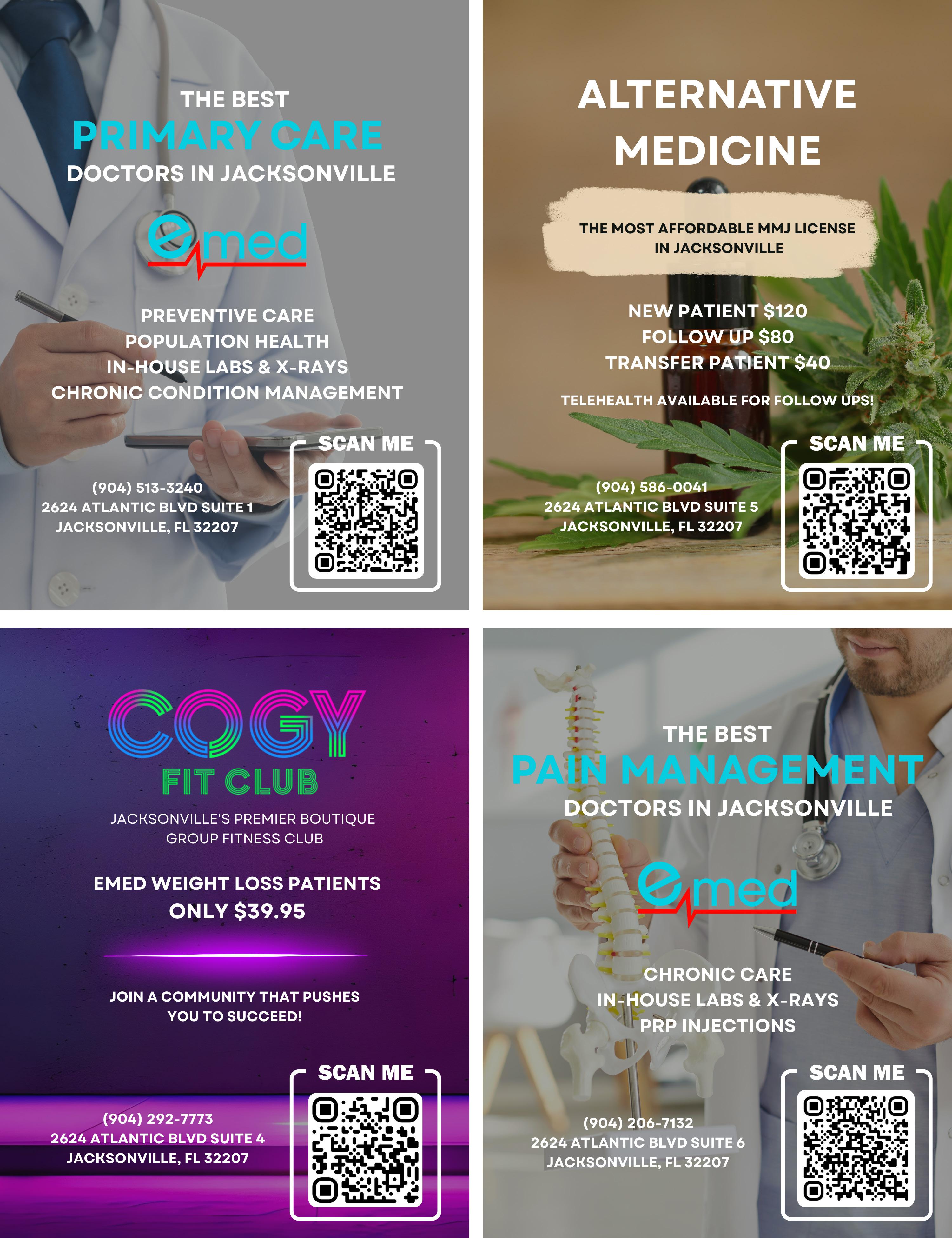
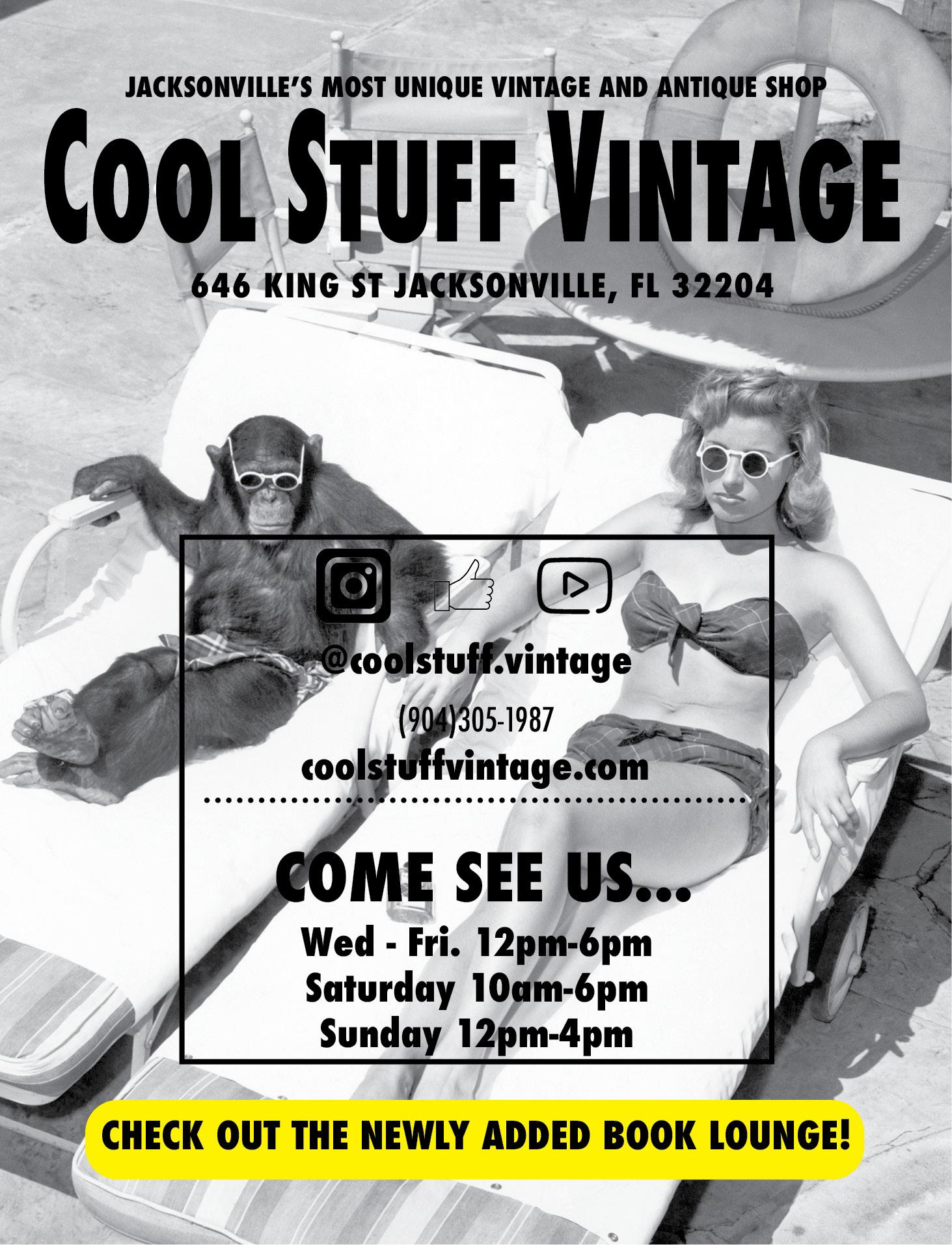
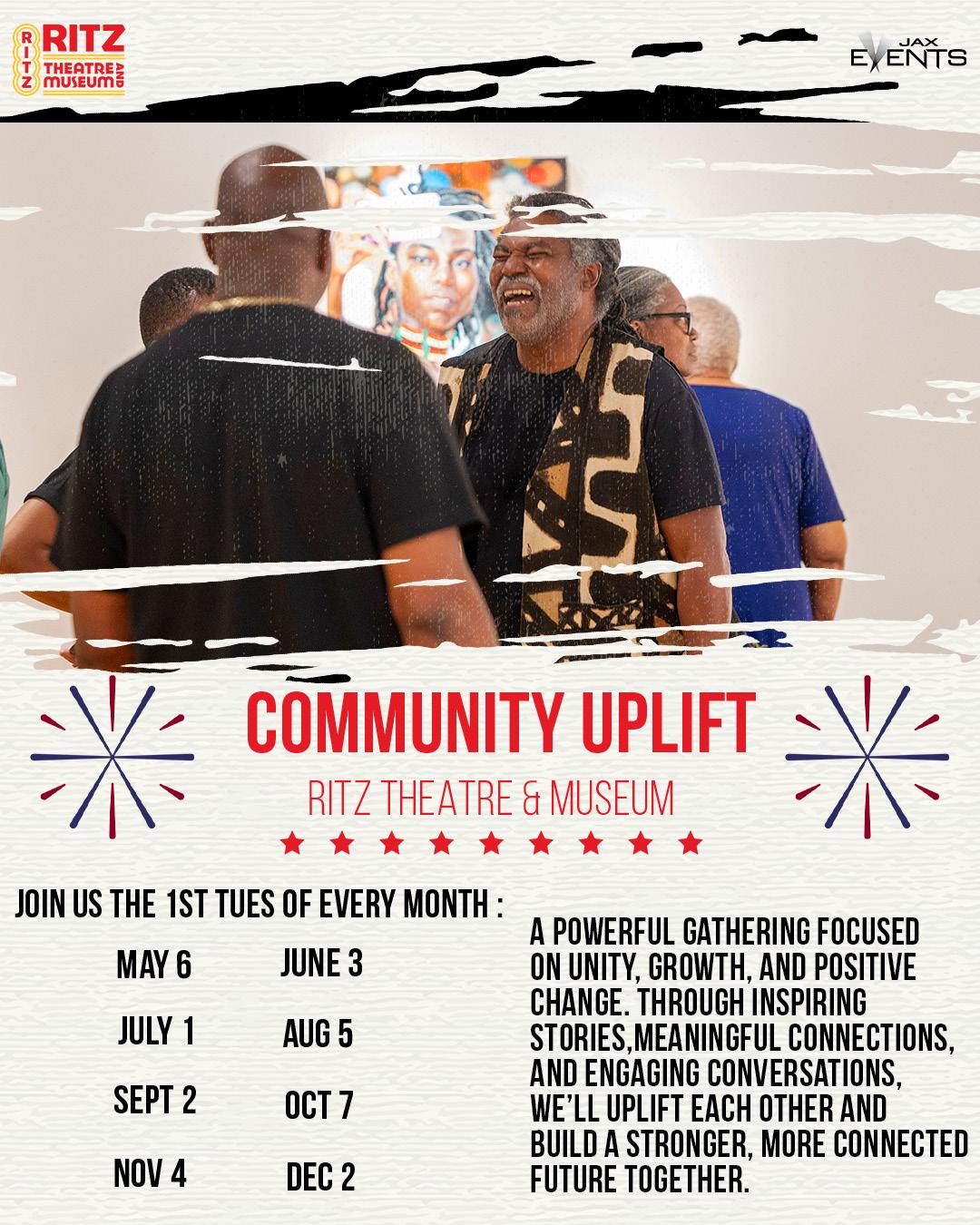


Words & photos by Carmen Macri
“I’m so proud to be from the South. I think Florida, for whatever reason, gets a bad rap. But to me, this is the best. And I’m so proud to be from Florida and to be in this region of the world — the Southeast. It’s so authentic. It’s unlike anything anywhere else. Even when it comes to our color palettes; you can see a pastel and you can feel it, whether it’s the pinks or the blues, there’s just so much identity that happens within this region,” said Kasey Faver, founder of Southern streetwear brand Lafavre. “We say the South got somethin’ to say, but I also think that’s a frame of mind. Yeah, geographically we’re in the South, but at the same time, southern hospitality is a very real thing, and I think having a southern state of mind is so cool.”
Before building his own local empire, Faver was grinding it out in construction, sweating through long days under the relentless Florida sun. The job wore on him, and eventually, he knew it was time to pivot. He’d always been drawn to clothing, not just fashion, but lifestyle streetwear. And as a Florida native, he saw the untapped potential right here in Jacksonville.
He was living in San Francisco at the time, having relocated for work, when the idea hit him like a freight train. This was it. All or nothing. He had the vision — now it was just a matter of making it real.
“I remember when I had the idea, I was on a cool hike, Will Rogers State Park in L.A., because when I was out there, I was going stone cold sober, no smoking, no drinking, clear head. I needed some clarity,” Faver recalled. “So I would just go hiking for hours. And there was a specific hike on a specific day where I was walking on this amazing trail, and finally, I had the epiphany. I always enjoyed clothing. Why don’t I just see what I can do and create my own storyline with my own product and my own fashion brand? And I was just like, there it is, that’s what I want to do. And I remember calling my best friend Joe, and I was like, I got it, man. I think I’m going to start a clothing brand.”
Faver didn’t waste any time. He picked up the phone and called his dad — also his boss at the time — to pitch the idea. He braced for some pushback (because let’s be real, quitting your job to chase a new dream on a random Tuesday doesn’t usually go over easily). But to his surprise, his dad was all in. Not only did he back the move, he offered to keep Faver on salary for a year while he got the business off the ground, with one condition: pay it all back once things took off.
Lafavre officially came to life in 2019. At the start, it was nothing more than a simple website stocked with a few graphic tees and corduroy hats. Word spread fast, though. Early on, people would hit up Faver directly to commission pieces, and he’d make it happen, sometimes literally handing off the goods in a parking lot. Grassroots hustle at its finest.
When it came to sourcing, Faver made it a point to keep things close to home. He sought out local factories and made sure his materials were all U.S.-sourced. For him, keeping it local wasn’t just a detail — it was part of the brand.
“I would say 95% of it is made in America. More specifically, hats in North Carolina and Georgia. T-shirts, sweats and fleece, either in Pennsylvania or Florida. I try to keep everything as close to home as possible,” Faver shared. “I just want to make everything domestically. I don’t want to go overseas. I want to go to the factory, I want to see the people that make it, establish these relationships and be able to support them. It’s a dying industry these days in America. But whenever I walk on a sewing floor and I see the people that are actually knitting or sewing, that stuff is so powerful. It is so cool to be able to see the people who have dedicated their lives to this craft.”
Lafavre started out as a southern lifestyle brand, rooted in Florida culture but designed to resonate far and wide. Think timeless vintage aesthetics — looks that never go out of style. From the beginning, it wasn’t about chasing trends. Faver stayed locked into the brand’s original identity, always paying homage to its southern roots while keeping the vibe classic and clean. But eventually, Faver found himself drawn to another market —collegiate— and he knew there was an opening.
The college lifestyle angle really took off after Faver partnered with the University of Florida. He was hustling hard, knocking on every door he could to break into the market. Eventually, he landed a meeting with the university’s licensing director and laid it all out. She was intrigued but hesitant — she liked the vision but needed to see more of a plan.
Thinking fast, Faver pulled out his laptop and queued up a short film he had just produced. It was peak Florida — jumping off the Mathews Bridge, firing guns in the swamp, the whole nine. But more than the wild visuals, the film told his story. And that’s what sealed the deal.
“And then she was just like, ‘It’s great. You know what the best thing is? What’s missing in the college sector? Lifestyle,’” Faver recalled.
From there, everything snowballed. One door opened another, and before long, Lafavre landed the ultimate Jacksonville collab — the Jacksonville Jaguars. The team gives out exclusive season ticket member boxes packed with Jags merch, and one day, the person in charge hit up Faver to see if he could design hats for them. He didn’t blink. Of course, he was in. Faver was already a familiar name around the building — plenty of Jaguars staffers were rocking his unlicensed gear long before anything official came into play.


But these had to be perfect. Working with corduroy is tricky to begin with and finding just the right shade of teal? Even trickier. It took a lot of trial and error, but they nailed it. And when the hats finally landed, the response was instant — the entire Jaguars staff wanted in. Next thing he knew, they were making hats for the whole team and setting up meetings to have them sold at the stadium.
“It’s just a dream come true. You know what I mean? A fifth-generation Palm Valley kid, diehard Jags fan, walking through the door with a mood board and hoping that they can see something,” Faver explained. “But I gave a great pitch, and then the NFL approved the application. They were so great to work with because honestly, what they said was, ‘You roll with this like you do, we just want to sprinkle a little bit of Jaguars on this.’”
The brand hasn’t slowed down since. Lafavre continues to grow, and while it’s already carved out a loyal following across the South, Faver and his “small but mighty” team of five have their sights set on a much bigger map. The mission now is to take that southern-rooted identity and push it coast to coast.
Right now, the brand is proudly flying the flag for southern culture — gritty, authentic and unapologetically bold. But with the momentum from college collaborations and a clear vision in place, Lafavre is well on its way to becoming more than just a regional favorite. It’s shaping up to be a nationwide name.
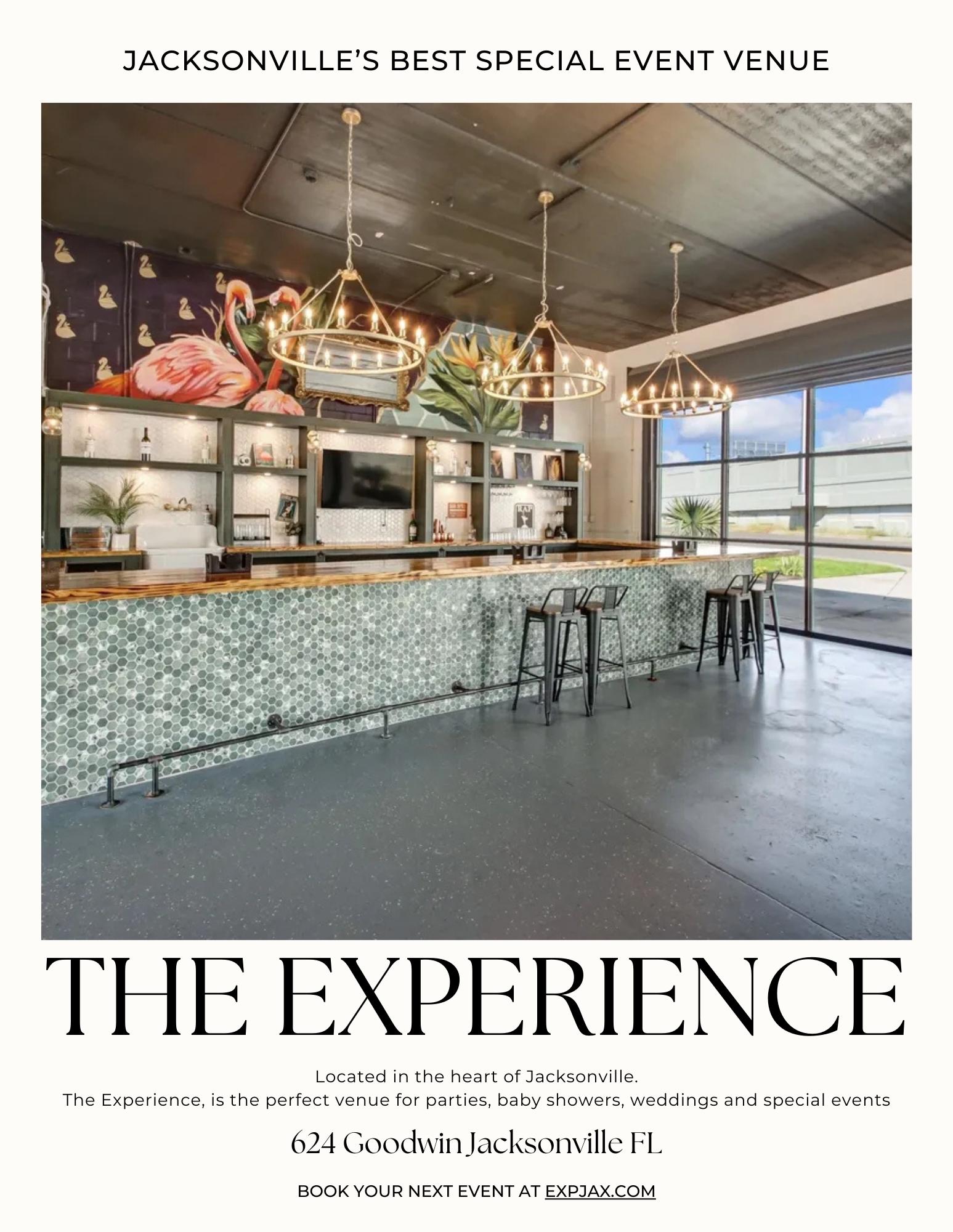
Words by Carmen Macri


“Anatomy of a Trial Lawyer” by Jane Akre Folio Weekly, May 10, 2005

Farah & Farah was once one of the most consistent and generous advertisers in “Folio Weekly.” Like most local media outlets, we relied heavily on their ad dollars. And when a sponsor puts that kind of money behind a publication, certain privileges tend to follow. Case in point: On May 10, 2005, “Folio Weekly” ran a glowing cover story on Eddie Farah titled “Anatomy of a Trial Lawyer”—arguably one of the most flattering pieces our prior ownership group published.
But a lot has changed since then.
“Folio” is no longer tied to advertiser influence. Our editorial board is committed to pursuing the kinds of stories other outlets often avoid. Meanwhile, the personal injury law game has gotten a lot more aggressive — and State Bar Associations, a lot less vigilant.
As of 2025, Jacksonville ranks 47th in the nation among designated marketing areas (DMAs), according to Nielsen. DMAs are ranked by viewership and help determine what advertisers pay to reach an audience. Surprisingly, Jacksonville sits above several major Florida markets, including Tampa, Orlando, and parts of South Florida. That makes ad space here relatively cheap — and a prime target for South Florida law firms looking to expand their reach without breaking the bank.
Jacksonville’s major media landscape is more consolidated than most markets with fewer companies controlling more outlets. When one company owns multiple major stations in a single market, it’s called a duopoly. Jacksonville doesn’t just have one — it has two. That leaves just three real sources for local TV news.
First Coast News produces content for WTLV (NBC, channel 12) and WJXX (ABC, channel 25), both owned by Tegna Inc. Cox Enterprises runs the newsroom for WFOX (Fox, channel 30) and WJAX (CBS, channel 47). Then there’s WJXT (channel 4), the only major independent station in town, owned by Graham Holdings Company.

On the print side, you’ve got outlets like “The Florida Times-Union” and “Jacksonville Business Journal,” plus radio stations like WOKV — also owned by Cox.
Nearly every major media outlet in Jacksonville is owned by a national corporation with profit at the core. These companies rely on commercial sponsorships, and in many cases, the line between editorial and advertising isn’t just blurry — it’s crossed. Frequently.
Years ago, local reporter Nikki Preede Kimbleton made a simple comment on Facebook expressing frustration over Farah & Farah’s role in a lawsuit involving a family member. Someone at the firm saw it. Not long after, a station manager reprimanded her. Even off-the-clock, reporters weren’t free to speak their minds — especially when it came to big advertisers. It’s a clear example of just how much influence million-dollar sponsorships hold over local media outlets.

The Florida Bar has been investigating and prosecuting Charlie Farah of Farah & Farah for years. But when Folio Weekly’s reporters and sleuths dug through media archives, we found barely a whisper—most stories never made it to air, and the rest were buried in tiny blurbs. Meanwhile, these same outlets have no problem reporting when a local attorney gets a DUI or crosses the line with a client. So why the silence when it comes to one of the city’s most prolific advertising lawyers?
On Feb. 27, 2025, without any significant local media coverage, the Florida Supreme Court released an opinion in The Florida Bar vs. Charlie (aka Chuck) Farah.
In the Opinion, the Florida Supreme Court found Charlie Farah guilty of violating Florida Rules of Professional Conduct 4-1.3, 4-1.4(a), 4-1.16(a)(1), and 4-1.5(f)(2) in contrast to a neutral referee finding in Farah’s favor. The Florida Bar desired a 30day suspension from the practice of law, and the Florida Supreme Court remanded the matter back to the referee with additional guidance.
This dispute has been ongoing since 2017, and the initial Court Order was scathing. Four federal judges drafted an Order sanctioning Charlie Farah and Norwood Wilner.
According to a federal court order, four respected district judges found that in 2008, Charlie Farah and attorney Wilner filed tobacco litigation claims on behalf of hundreds of people who had never authorized them, and in some cases, had never even smoked. More than 500 of the supposed plaintiffs were, in fact, deceased. The mess only came to light after the court, frustrated by the situation, brought in a special master to investigate. Despite pushback from the attorneys—who insisted everything was above board—the special master sent questionnaires directly to the individuals listed as plaintiffs. That’s when the truth came out. The special master’s report concluded that Farah and Wilner had violated Federal Rule of Civil Procedure 11, 28 U.S.C. § 1927, the Middle District’s Local Rules and Florida’s Rules of Professional Conduct.
Federal Judges William G. Young, Timothy J. Corrigan, Marcia Morales Howard and Roy B. Dalton Jr. co-authored and signed a 148-page order outlining serious misconduct by Farah. According to the judges, Farah’s actions clogged the system: “Other litigants faced increased delays as the court had to divert its attention to cleaning up the
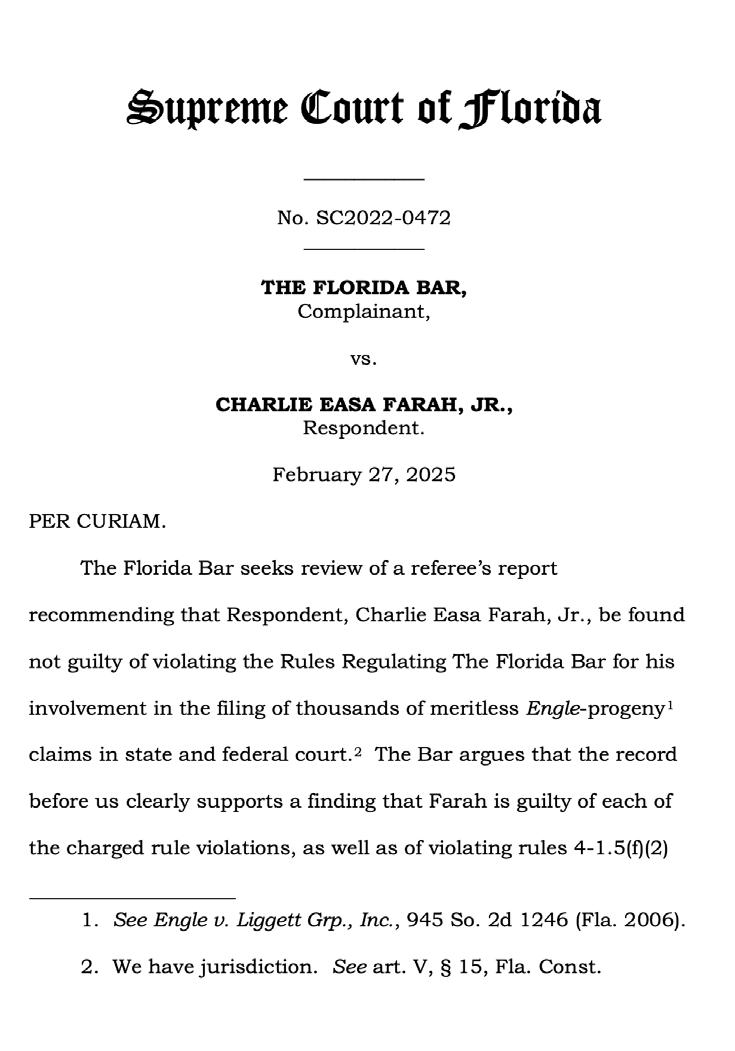
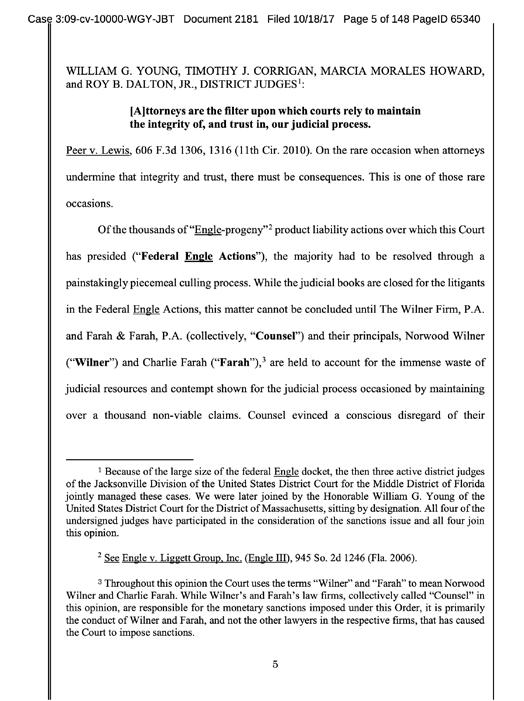

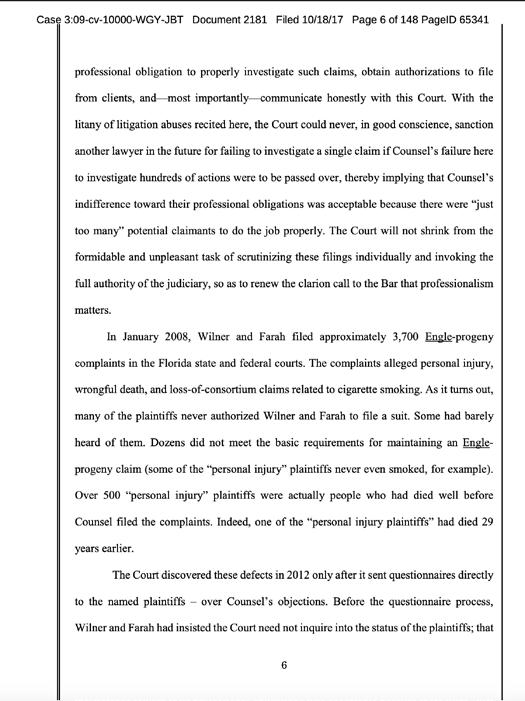
mess that was the Engle docket.” They went on to say it was Farah’s “obstructive, deceptive and recalcitrant behavior,” combined with hundreds of frivolous filings, that forced the court to pursue sanctions.
The result was a record-breaking penalty of $9,164,404.12. That figure was based on 1,200 bogus lawsuits, each costing the court around $7,000 to resolve. On top of that, Farah and Wilner were ordered to cover the cost of a special master’s seven-month investigation — roughly $435,000. That amount was eventually reduced to $4,329,668.43, with Farah covering half. As far as we can tell, it’s the largest sanction ever handed down to lawyers in this district.
As the four federal judges put it: “On the rare occasion when attorneys undermine that integrity and trust, there must be consequences. This is one of those rare occasions.” The court went further, saying that given the “litany of abuses recited here,” it could “never, in good conscience, sanction another lawyer in the future for failing to investigate a single claim if counsel’s failure here to investigate



hundreds of actions were to be passed over.”
All these years later, the Florida Bar is still investigating Charlie Farah and trying to hold him accountable. And yet, not a single television news outlet has reported on this ongoing case.
The Florida Supreme Court repeatedly cites the 2017 federal order in its 2025 opinion. It points out that if Farah and his firm had “diligently conducted a pre-suit investigation in each case and maintained client communication, he surely would have learned” that some clients had already passed away or missed filing deadlines that doomed their cases. The Court found that 500 clients had died before a complaint was even filed, and another 572 had never authorized Farah and Wilner to file or maintain a lawsuit on their behalf.
And if you browse Farah & Farah’s online reviews today, you’ll see similar complaints: poor communication, clients unable to reach their assigned attorney and widespread frustration with a high-volume intake model that seems built for quantity over quality.
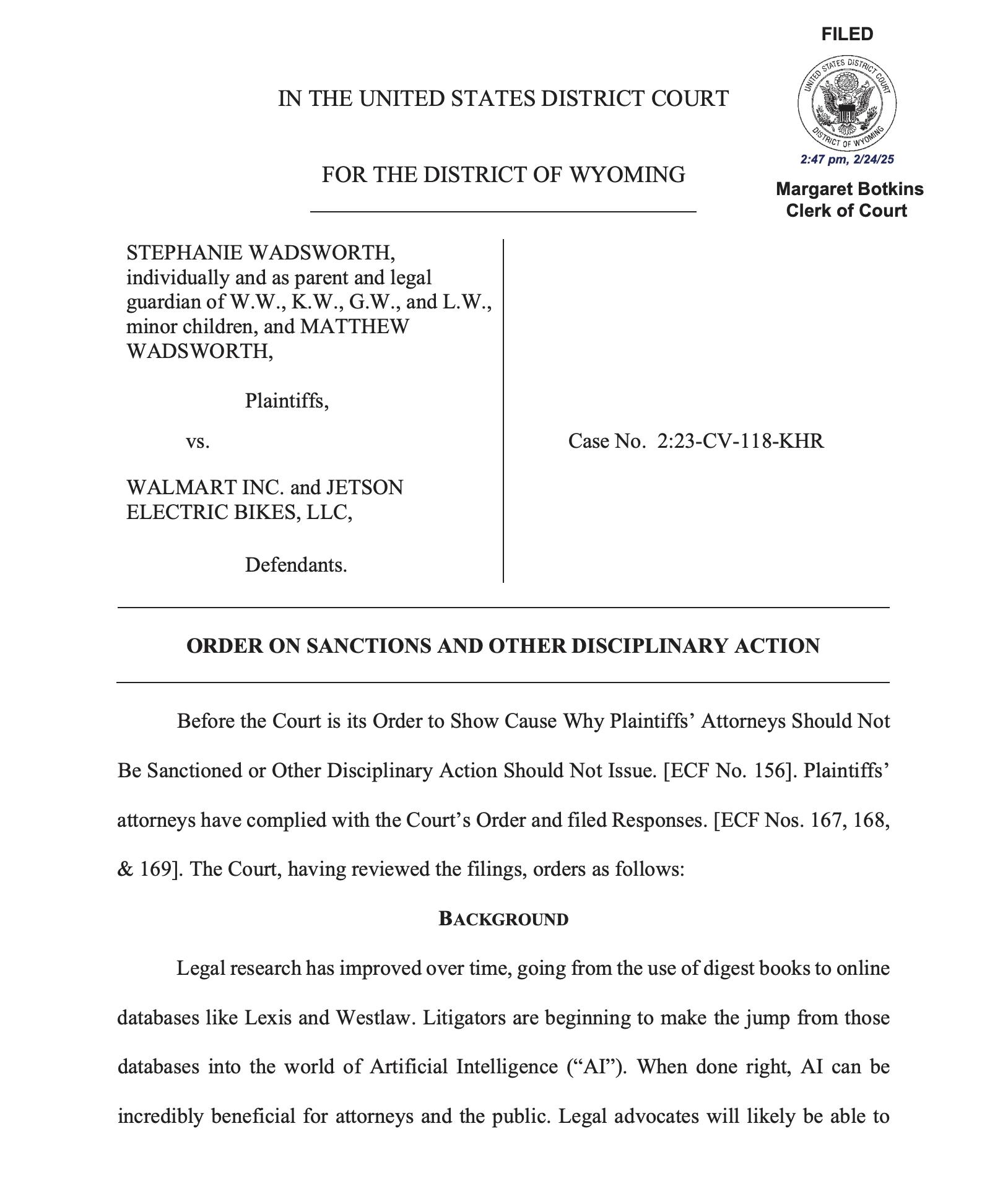
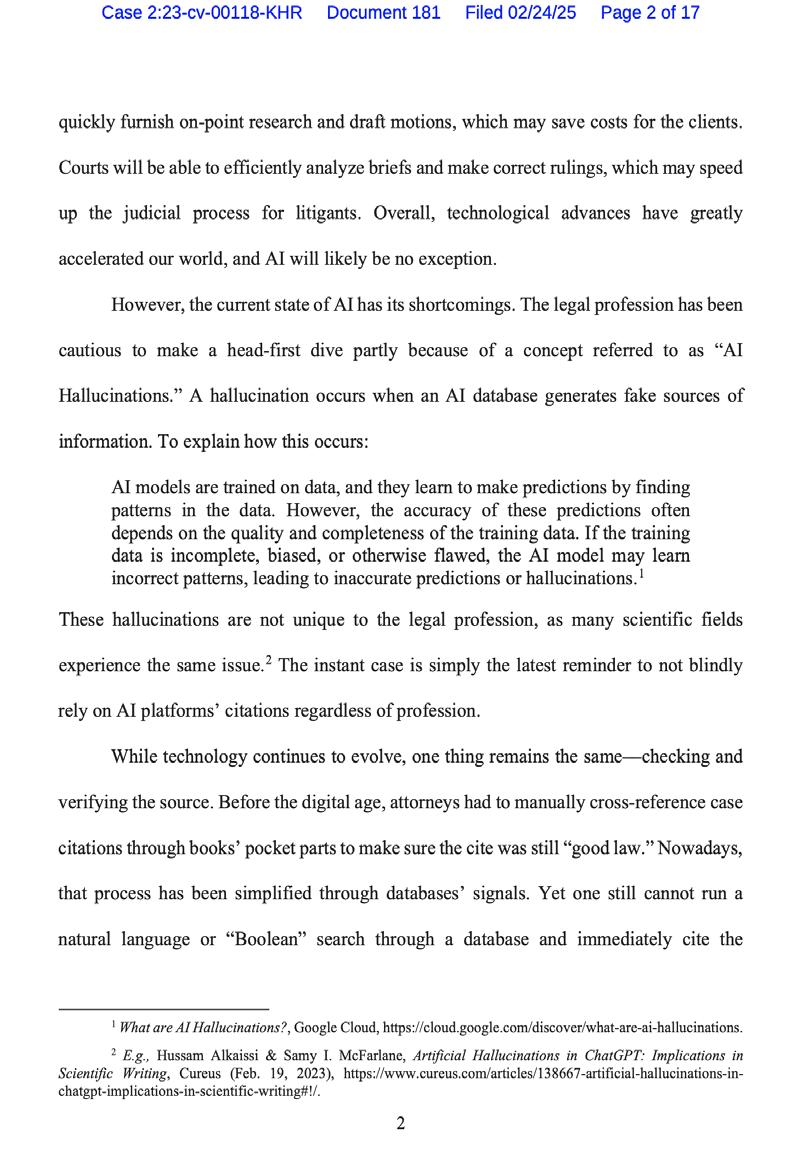
The ethical issues that come with prioritizing quantity over quality aren’t exclusive to Farah & Farah. Turns out, bigger isn’t always better — in fact, it’s often worse. Take a recent case at Morgan & Morgan involving a hoverboard injury. John Morgan’s son, Mike Morgan, pulled together a legal team from inside the firm and filed suit. However, as key deadlines approached, associate Rudwin Ayala filed a motion in limine with Mike Morgan’s name still attached. Later, Morgan claimed he hadn’t even reviewed the filing.
In a motion filed by Morgan & Morgan, nine cases were cited as precedent to support an injury claim against Walmart. The problem? Eight of those cases were completely made up. The people weren’t real. The citations didn’t exist. The legal precedent came straight from the Land of Make Believe — courtesy of artificial intelligence.
When asked for comment by a Tampa media outlet, firm founder John Morgan didn’t sugarcoat it: “One of our lawyers relied solely on AI and fucked up.”
According to the same report, the case is playing out quietly in a Wyoming courtroom and has barely registered in the mainstream press. No surprise there — given how much Morgan & Morgan spends on advertising, most outlets won’t touch it. Behind the scenes, big firms are rushing to draft internal memos, while small-firm lawyers keep shaking their heads, wondering how this even happened in the first place.
The court called it exactly what it was: an “AI hallucination.” The fake cases weren’t a technical glitch — they were the result of attorneys failing to verify the citations. Judge Rankin put the blame squarely on the lawyers. In a court order, he wrote: “On January 22, 2025, Plaintiffs’ attorneys, Mr. Rudwin Ayala, Mr. T. Michael Morgan, and Ms. Taly Goody filed Motions in Limine that cited


nine cases, but eight did not exist.” By Feb. 10, the attorneys admitted the cases were AI-generated fakes.
Just like in the Farah case, the judge ruled that Morgan & Morgan’s conduct violated Rule 11(b). He didn’t mince words: “A fake opinion is not ‘existing law,’ and citation to a fake opinion does not provide a non-frivolous ground for extending, modifying, or reversing existing law, or for establishing new law.”
Judge Rankin ruled that Ayala “will receive the highest sanction,” revoking his ability to represent the plaintiff in the case and hitting him with a $3,000 fine. As for Mike Morgan, the court noted he “was not the drafter” of the motion, but still fined him $1,000 for failing to meet his obligations under Rule 11. The judge wrote that while Morgan’s conduct was less severe than Ayala’s, “the imposition of a fine is the least severe punishment to deter future misconduct.” Local counsel didn’t escape unscathed either — they were fined $1,000 as well.
In an apparent attempt to bury the story, John Morgan quickly pushed out a self-serving headline within 24 hours, announcing he was launching a new political party. The timing wasn’t subtle. It helped drown out the fact that the so-called “world’s largest law firm” had just been sanctioned by a federal judge for citing not one, but eight fake cases in what should have been a routine legal filing.
It’s just another example of how some big firms can’t seem to manage their own mess, but when major mistakes happen, they often get a pass from the very institutions that are supposed to protect the public from exactly this kind of conduct.
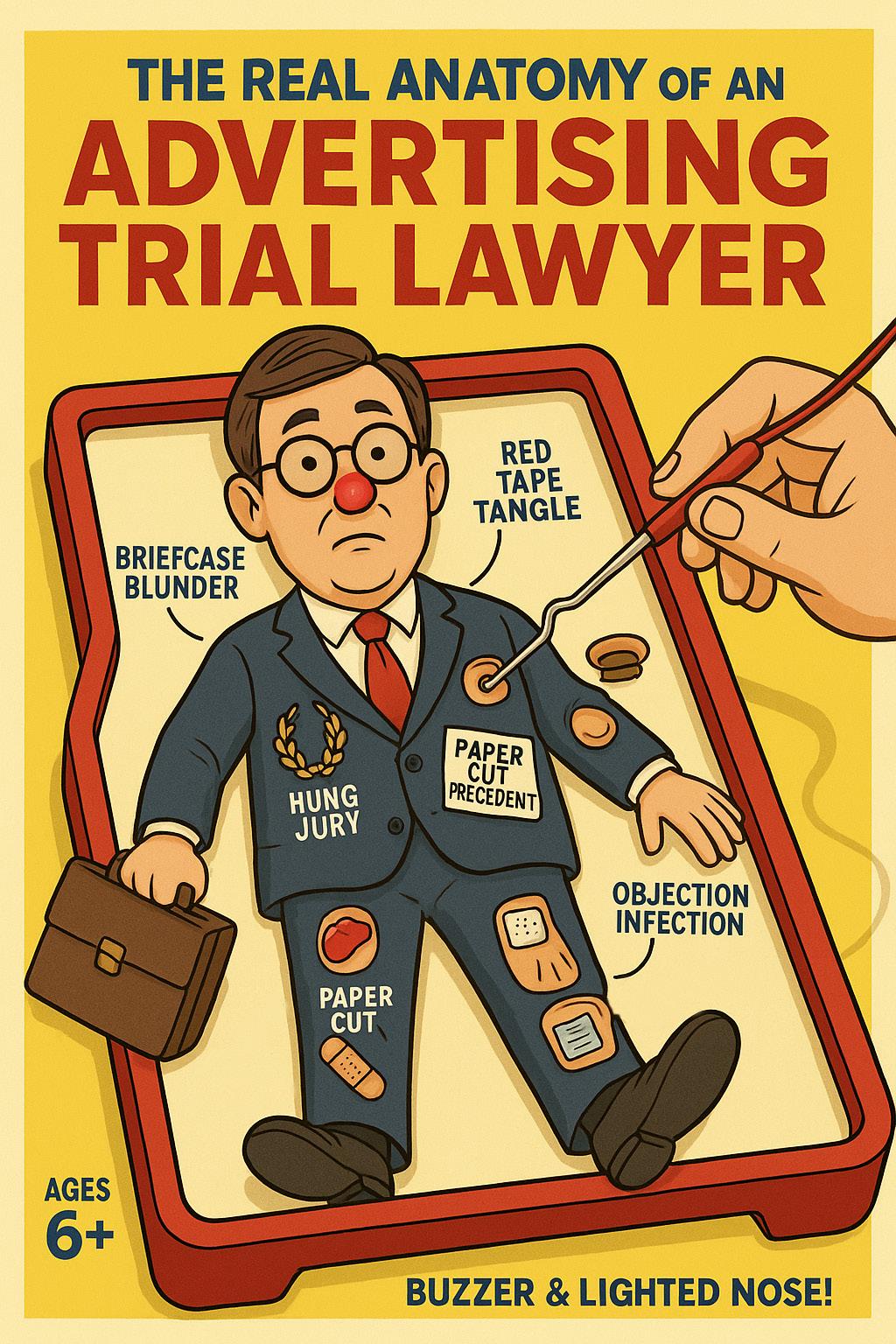
For every sanctions order, Bar violation or public reprimand that makes the record, there are countless stories that never do. Juanita Johnson is one of them. After seeing the nonstop commercials, she believed she could count on Farah & Farah when she was injured on May 20, 2016. That day, she sat in a floor model chair at her local Pier 1 Imports — unaware it had already been recalled. The chair collapsed beneath her, sending her crashing to the floor.
Despite reaching out to Farah & Farah, Juanita Johnson never spoke with — or was assigned to — anyone named “Farah.” Like most clients at bigname firms, she was handed off to a junior associate with no real experience handling a case like hers. According to court filings, that associate, Jeff Gadd, filed a complaint that left out key claims required under Florida law, like product liability, negligent assembly by store employees and other applicable theories. Instead, he filed a single-count premises liability complaint — and named the wrong defendant.
Things went further off track from there. Farah & Farah served a Proposal for Settlement to Pier 1 on June 7, 2018. According to the case file, Ms. Johnson testified that this was done without her knowledge or consent. In fact, records show she repeatedly told the firm not to move forward. She even documented in writing that she didn’t want her case settled until after a second back surgery.
A former employee at a major advertising agency agreed to speak with us on the condition of anonymity. They cited fears of violating a non-disclosure agreement and, more pointedly, the risks of speaking out against “powerful lawyers.”
The former employee told us one of the biggest problems is the lack of training at these high-volume firms. Young lawyers are hired fresh and tossed into a “pod” system, working alongside case managers and paralegals juggling hundreds of files at once. Paralegals, they said, are sometimes pushed to the edge — doing work that arguably crosses the line into practicing law without a license.
Many of the attorneys are paid salaries well below the industry average, making commissions and settlement bonuses their only real path to earning a living. That kind of compensation model breeds conflicts of interest — lawyers are financially incentivized to settle quickly rather than take a case to trial, which costs time, money and effort. Insurance companies know exactly which firms will take the bait and which will fight in court. It’s a dynamic that doesn’t just raise ethical questions — it borders on outright false advertising.
Another former employee told us about their experience working for Morgan & Morgan. Each office would hold “settlement days” where insurance adjusters would come into the office with hand-written checkbooks or laptops that could print checks on the spot. Lawyers, paralegals and adjusters would sit down, discuss open claims and come to a last offer, as if it were some flea market accessory they were all negotiating.
On September 17, 2018, fed up and still in pain, Johnson filed her own handwritten protest with the court, stating plainly that Farah & Farah had failed her. But because she was still technically represented by the firm, the court couldn’t accept her filing.
Under oath, Farah & Farah’s attorney blamed the situation on untrained paralegals, despite the firm’s legal obligation to train and supervise them. Chuck Farah later testified in federal court that Ms. Johnson had been unclear about whether she wanted to accept the settlement, even though the record shows otherwise. She made her position plain — verbally and in writing: do not settle.
Instead of honoring their client’s wishes, Farah & Farah’s own file reveals their lawyers called opposing counsel at Pier 1 and urged them to push for enforcement of the unauthorized settlement, rather than walk it back. Meanwhile, the firm dragged its feet at every turn and failed to secure the settlement funds. So when Pier 1 filed for bankruptcy, Johnson was left with nothing.
If justice delayed is justice denied, this went far beyond delay. It was abandonment.
This strategy ramped up every spring. Partners at Morgan & Morgan offices would set a target — say, $1 million in fees for the month. If the combined total from case managers, paralegals, and attorneys hit that number, everyone got an all-expenses-paid vacation. The pressure to settle cases fast wasn’t just implied, it was incentivized.
We spoke with multiple local attorneys for this story, and they all echoed the same thing: personal injury cases should settle when the time is right, not when a bonus is on the line. That means waiting until the client is healing and has a clear medical prognosis and real understanding of their long-term needs. Only then can the true value of a case be weighed, especially when non-economic damages like pain and suffering can swing wildly from modest to massive. Settlement timelines can stretch for months, even years. What they shouldn’t be is rushed to meet arbitrary firm goals or packaged up just to score someone a free vacation.
Forcing cases to settle in an arbitrary 30-day period seems to create conflicts of interest and wouldn’t make many clients happy if they knew. The former lawyer at Morgan & Morgan agreed with many of the local lawyers we spoke with, but also noted that lawyers at these firms are not supposed to talk about the incentives or how the settlement offer came to be.
Perhaps this is why lawyers get a bad rap. But part of raising the bar should be more transparency, not less. When the media won’t ruffle the feathers of their advertisers, these stories get lost. Our court dockets are filled with people seeking justice and getting further harmed by their hired advocates.
In legal advertising, nothing beats the prized “testimonial” ad. It’s the gold standard — clients singing your praises straight to camera. With tens of thousands of clients at any given time, you’d think firms like Farah & Farah and Morgan & Morgan would have an endless stream of glowing reviews to choose from. Apparently, that’s not the case.
Recently, Farah & Farah ran numerous advertisements featuring their “real client” Chloe. Chloe was featured in a number of ads telling her story, standing beside Eddie and Chuck Farah. Not one ad mentioned that Chloe was simultaneously employed by Farah & Farah as their marketing specialist. Let us reiterate — their paid marketing employee doing multiple testimonials in a television campaign.

Florida’s ethics rules generally say you can’t give someone a benefit in exchange for a testimonial. But if the person giving the review is a paid employee? That’s a gray area. Is it technically a violation? Probably not. Should it be disclosed that Chloe works in the firm’s marketing department? Absolutely. According to Google’s own policy, employees — past or present — aren’t supposed to leave reviews about their workplace because of the obvious bias. It muddles the waters. Now, imagine if Chloe wanted to leave a bad review. Could she? Doubtful. We’ve already seen local media take heat for less. Lawyers are supposed to avoid even the appearance of impropriety — so why is being upfront in advertising such a hard ask?
Ironically, one of our freelance writers here at “Folio” was also featured in an attorney testimonial commercial in the last few years. When we asked him about it, he stated that he wasn’t actually a client of the firm, not ever. He went on to explain that he was contacted by a talent agency seeking someone who looked like him to be in a TV commercial. He simply had to show up and let them film him standing in a group of people who were supposed to be smiling. He was to be “acting” as if he were a very satisfied client of the firm, as if he had received a large settlement. He was paid $500 for a few minutes of his time by the talent agency, and that was that.
If you thought that was bad, wait until you hear what happened on “The Howard Stern Show” about six months ago. Ronnie Mund, Howard’s longtime limo driver and now a regular on the show, vented one morning about how a moving company trashed some of his stuff. Enter Mike Morgan — yes, that Morgan — who slid into Ronnie’s DMs offering legal help. That’s a problem. Florida Bar Rule 4-7.18 bans lawyers from soliciting clients, especially when it’s for “pecuniary gain.” But it gets worse. Ronnie later told the Stern audience he was asked to do a video testimonial — and in it, he was told to say he called Morgan & Morgan. That’s not how it went down.
Over the course of a week, Stern had a field day mocking both Mund and Morgan & Morgan. Stern warned Mund that he couldn’t use his name or likeness like that, pointing out how the commercial seemed to capitalize more on Stern’s celebrity than on Mund’s actual lack of it. To make matters worse, the “Stern Show” crew ripped into Mund for letting Morgan & Morgan use him like that with the commercial implying Mund suffered a much bigger loss than just some damaged property. Mund claimed it was smart marketing by Morgan, with an ad designed to confuse customers about what kind of case they were really handling. Clever? Maybe. But it’s a clear violation of Florida’s advertising standards.
Article V, Section 15 of the Constitution of the State of Florida gives the Supreme Court of Florida exclusive authority to oversee the practice of law, including discipline against attorneys. The Florida Bar is the investigative and prosecutorial authority in the lawyer regulatory process. All lawyers must answer to the Bar, but the state now has over 100,000 lawyers.
In 1982, the Florida Bar implemented a board certification program for lawyers. It is voluntary, but is officiated by the Florida Supreme Court and administered by The Florida Bar. The program was designed to help the public select lawyers who are distinguished in particular areas of law.
While it is certainly challenging to pinpoint, the Florida Bar states that only about 6% of eligible members are board-certified. And it’s likely that a significant portion of board-certified attorneys in Florida advertise, however, it’s interesting that the big money firms advertising don’t seem to be board-certified, as they certainly are not proudly displaying that accreditation. Perhaps it’s because they are continually being investigated and may not actually qualify to be distinguished as such.
To become board certified by The Florida Bar, a lawyer must be in good standing and meet standards set by the Florida Supreme Court. Certification is available in over 25 practice areas — from civil trial and criminal law to real estate, immigration and intellectual property. Requirements include at least five years of legal practice, significant experience in the chosen field, passing a rigorous exam, strong peer reviews and completion of continuing legal education specific to the specialty.
According to the Florida Bar, more than 4,887 Florida lawyers have achieved certification. Board certification used to be the “expert standard” in the state, meaning only board-certified lawyers could call themselves experts in those fields, but advertising lawyers challenged the standard under the First Amendment. Now, any lawyer can be called an expert, including lawyers who let AI write their briefs or who file lawsuits on behalf of clients they haven’t heard from in years. However, you can always check to make sure you are hiring a real “expert” by consulting the Florida Bar’s website.

The point is, big firm ad dollars work a lot like political lobbying. There is no surprise that money, influence and silence are all tangled up in the same web. It starts to feel a lot like politics, doesn’t it? And just like in politics, transparency tends to disappear when there’s too much at stake. Even investigative reporters at major networks know better than to cross certain lines — because doing so could cost them their job. Luckily for us and you, we can’t be bought.

When a news station deliberately avoids reporting negative information about a major advertiser, it’s not just questionable — it’s a breach of journalistic integrity. The reasons vary, but the root cause is usually money. Sometimes it’s a clear conflict of interest: the station relies on advertising dollars from the very people they’re supposed to be holding accountable. Other times it’s fear—fear of retaliation, of losing ad revenue, of getting cut off from future access. There’s also internal pressure. Management might quietly steer coverage away from controversy, especially when the subject has deep pockets and a PR team on speed dial. And then there’s self-censorship journalists who know what stories won’t fly, so they never pitch them. The fallout? The public is left in the dark. Trust erodes. Credibility slips. And the people who rely on the press to tell them the truth are left reading between the lines.

TUESDAY, JUNE 3 – SUNDAY, JUNE 8
Friday, June 6, 7:05PM AHOY MATEY! PIRATE NIGHT
Sail the seas with the Jacksonville Jumbo Shrimp as we celebrate all things pirates! Additionally, enjoy Friday Night Lites with $2 12oz. Miller Lites, presented by Miller Lite, and








Saturday, June 7, 6:35PM RED CAPS BUTTON-UP SHIRT GIVEAWAY
The Jumbo Shrimp are proud to be celebrating our rich history as the Jacksonville Red Caps and tonight, the first 2,000 people through the Main Gate at the Baptist Health Centerfield Plaza will be going home with a Red Caps button-up shirt! Be sure to stick around after the game for Saturday Night Fireworks! Presented by Florida Blue.

Sunday, June 8, 3:05PM RED CAPS NEGRO LEAGUE WEEKEND
Join the Jumbo Shrimp and Florida Blue for our salute to the Negro Leagues as we take the field as the Jax Red Caps. It’s Baptist Health Sunday Family FUNday, so head out to the center field gate where we will host catch on the field until 20 minutes after the gates have opened. Kids can also feel like the pros after each Sunday game by running the bases once the field is clear. Plus, face paint, balloon animals & more, presented by Baptist Health.
TUESDAY, JUNE 24 – SUNDAY, JUNE 29




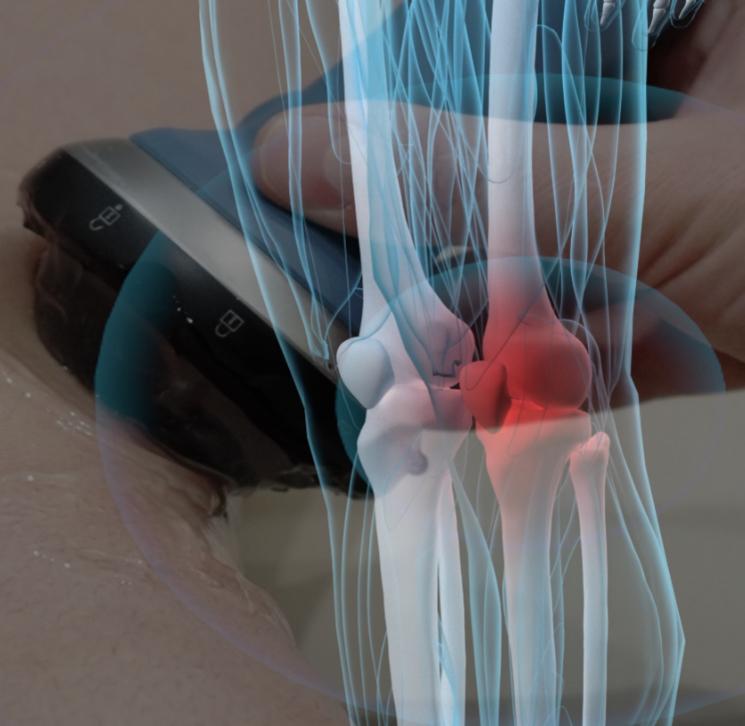


Words by Carmen Macri
Inside Jacksonville’s broken rental market, where the worst landlords operate unchecked and tenants are left to fend for themselves.

In Jacksonville, a handful of landlords are driving an outsized share of the city’s eviction crisis — and they’re doing it with near-total impunity. Just 100 buildings account for a third of all eviction filings in the city, a startling concentration that’s turning housing into a revolving door for thousands of renters. Duval County now holds the grim title of Florida’s eviction capital, and behind the numbers are corporate landlords, many operating from out of state, quietly raking in profits while tenants face mold, broken appliances and rent hikes they can’t afford. With no tenant bill of rights and no real accountability, the system isn’t just broken — it’s working exactly as designed.
Landlords aren’t just kicking tenants out legally under no-cause evictions — they’re doing it while letting their properties rot. We’re talking sagging floors, black mold, broken appliances, rodent infestations, constant break-ins — the kind of conditions that would make most people walk out, if they had anywhere else to go. Tenants file complaints, over and over, and nothing changes — except the rent, which somehow keeps going up.
Evictions might be the headline, and we’ll get to that, but first, let’s talk about some of the worst rental properties in Jacksonville. These places aren’t just rundown—they’re actively neglected, while landlords keep cashing rent checks and turning a blind eye.
Cascade Apartments (formerly Kings Ridge) – Grand Park
Key Issues: Since October 2021, city inspectors have made 149 visits to the property, uncovering 86 code violations—everything from mold and collapsing staircases to rodent infestations. And yet, just $750 in fines have been issued. Meanwhile, tenants are still dealing with rats, roaches and constant water leaks.
How They Avoid Accountability : The fines are laughable — nowhere near enough to force real change. HUD might monitor affordability, but when it comes to basic livability? They’re missing in action. Landlords keep collecting rent while the buildings fall apart, and no one’s holding them to it.
Arlington
Key Issues : Tenants say maintenance is a joke — plumbing problems, busted appliances and no-show repairs are the norm. On top of that, there are constant safety concerns, from car break-ins to unresponsive staff who treat renters more like a problem than people.
How They Avoid Accountability : Work orders get closed without anything actually getting fixed. It’s a pattern: stall, ignore, then pretend it never happened. The goal isn’t to solve the issue — it’s to wear tenants down until they stop asking.
Key Issues: Piles of trash, crumbling staircases, pest problems — you name it. Tenants also call out bait-and-switch leasing tactics, outdated appliances that barely work, nonstop maintenance issues like broken ACs and mold, and a serious lack of security. Cameras don’t work, cars get stolen, and management doesn’t seem to care.
How They Avoid Accountability: It’s all a façade. They show off flashy renovated units that no one can actually rent, while the real apartments fall apart. It’s window dressing — meant to impress on tours, not to improve anyone’s living conditions.
Key Issues: Raw sewage, black mold, rodent infestations — the kind of stuff that makes a place unlivable. That’s exactly what happened here. By October 2022, it got so bad the city condemned the property, and residents were told to pack up and get out within days.
How They Avoid Accountability: Fear is the strategy. With eviction notices flying, tenants stay quiet because speaking up could cost them their homes. So nothing gets fixed. The problems pile up, the rent keeps coming in, and the people in charge keep pretending everything’s fine.
Key Issues: Mold, leaking roofs, and rats running wild. Back in July 2018, city inspectors finally stepped in, found multiple units unfit for living, and gave residents just one week to get out.
How They Avoid Accountability: It’s a rinse-and-repeat routine — flip the ownership, slap on a new LLC, throw on a coat of paint, and start the cycle all over again. There’s no serious follow-up, no teeth in enforcement, and definitely, no one lining up to hold these landlords accountable for the damage they leave behind.
This is just a fraction of what the rental market looks like in Jacksonville. These landlords and property managers aren’t in the business of housing people — they’re in the business of squeezing profit out of whoever’s desperate enough to sign a lease. They don’t care if the ceiling leaks, if the AC’s been broken for months, or if your kid’s getting sick from mold in the walls. Complaints pile up, and nothing happens. Tenants are treated like numbers, not people — easy to replace, easy to ignore. As long as the rent payment clears, the rest is just background noise.
Princeton’s Eviction Lab trackin g system released new data about which landlords file the most evictions in Jacksonville. And while the data doesn’t spell out exactly why each tenant gets the boot, in Jacksonville, the usual suspects are at play — missed rent, lease violations or no-cause evictions, which don’t require a reason at all. Florida law makes it easy: three days if you’re behind on rent, seven for breaking a rule, or just 15 days’ notice if you’re month-tomonth and the landlord wants you out. It’s all perfectly legal, which is exactly how landlords manage to cycle through tenants so fast in the same handful of buildings.
When the Eviction Lab built its national eviction database, researchers noticed something disturbing: certain landlords kept filing for eviction against the same tenants at the same addresses, month after month, sometimes even for years.

This practice, known as “serial eviction filings,” is just another tactic landlords use to squeeze money out of renters through the court system.
Out of the 100 properties driving the bulk of evictions, here are the top 10 with the highest rates. These buildings are mostly clustered in neighborhoods like Arlington and the Westside, areas where corporate-owned rental units dominate the landscape.
Tree House Apartments: 117 filings
Oaks at Normandy: 96 filings
Riverbank Apartments: 95 filings
Paradise Island Apartments : 93 filings
Caroline Square: 90 filings
Bennett Creek Apartments: 84 filings
Oaks at Red Bay : 84 filings
The Avery at Rivercity Marketplace: 79 filings
Gregory Cove Apartments: 77 filings
Kendall Court: 76 filings

Apparently, real men do steal makeup. Two men walked into a cosmetics store in Chimney Lakes and treated the place like an allyou-can-snatch buffet. While one played lookout, the other loaded up on beauty products — like a glam-themed buddy comedy, minus the laughs and, y’know, payment.
Instead of checking out, they just checked out — with nearly $5,000 worth of makeup in tow. Bold move. We’re not sure if they were shopping for themselves, prepping for a drag debut, or just confused about how stores work. Either way, they still have not been found, and who knows if we would recognize them now.

Not all heroes wear capes, some wear a badge and all black (and no, we’re not talking about Batman). A few weeks ago, two District 2 patrol officers responded to a different kind of distress call — or rather, a distress quack.
While on patrol, the officers noticed a frantic mama duck pacing near a storm grate. Turns out, one of her ducklings had taken an accidental detour and fallen in. Without missing a beat, the officers sprang into action, lifted the grate and rescued the tiny quacker.
The moment the duckling waddled back to its mom? Pure fluff-filled joy, and yes, it was all caught on camera. Cue the happy tears (and quacks).









The blue sky, absence of clouds and the frigid breeze that envelops the inside of my car and pushes past my hair is a gentle reminder of the beauty of the present — no sweaty palms, no racing heart, no intrusive thoughts — just a moment where I’m free — free from the anxiety that revels in disrupting my day. My brief liberation comes to a sudden halt as the emotions start to swell, as it seems to manifest out of nowhere (and for no good reason), the lack of autonomy over my own brain is so frustrating — but not uncommon — as it’s a shared experience am ongst many of us.

Anxiety disorder affects an estimated 19% of Americans annually, and the American Psychiatric Association’s 2024 annual mental health poll, “shows that U.S. adults are feeling increasingly anxious. In 2024, 43% of adults say they feel more anxious than they did the previous year, up from 37% in 2023 and 32% in 2022.”
Many factors have led to such a significant spike, such as current events.
According to the report, “Adults [were] particularly anxious about current events (70%) … the economy (77%), the 2024 U.S. election (73%), and gun violence (69%).”
The veil of stigma surrounding mental health disorders and illnesses is finally starting to fall as society begins to recognize the prevalence and its effects.
With May being Mental Health Awareness Month and Anxiety Awareness Month, it’s especially crucial that the conversation is had, and how do we destigmatize society’s negative perceptions?
The American Psychiatric Association’s Diagnostic and Statistical Manual of Mental Disorders lists several types of anxiety disorders, such as generalized anxiety disorder, agoraphobia, separation anxiety disorder, selective mutism, social anxiety disorder, phobias, and panic disorders.
Generalized anxiety disorder, according to Cleveland Clinic’s website, causes fear, worry, and a constant feeling of being overwhelmed. It’s characterized by excessive, frequent and unrealistic worry about everyday things, such as job responsibilities, health or chores.
Agoraphobia causes an intense fear of becoming overwhelmed or unable to escape or get help. People who have agoraphobia often avoid new places and unfamiliar situations such as large, open areas or enclosed spaces.
Separation Anxiety Disorder happens when someone feels excessive anxiety when separated from a loved one.
Selective Mutism happens when someone doesn’t talk in certain situations because of fear or anxiety. It usually affects young children, but it can also affect adolescents and adults.
Social Anxiety Disorder happens when someone experiences intense and ongoing fear of being judged negatively and/or watched by others. Specific Phobias are when something causes someone to feel fear or anx iety that’s so severe it consistently and overwhelmingly disrupts life. There are hundreds of phobias, but agoraphobia is the only phobia that is a distinct diagnosis.
Panic Disorder causes multiple unexpected panic attacks with the main feature of the condition usually happening without warning and isn’t due to another mental health or physical condition, although some people with panic disor ders have agoraphobia.
There are several other mental health conditions that share features with anxiety disorders, such as post-traumatic stress disorder (PTSD) and obses sive-compulsive disorder (OCD), but the American Psychiatric Association clas sifies those as conditions, not anxiety disorders.
While these defining terms can give major insight into the realm of anxiety, it is not a “one-size-fits-all” experience for everyone, as the causes, triggers and severity vary for everyone.
According to Dr. Petros Levounis, president of the American Psychiatric As sociation, “Americans are reporting more anxious feelings than in past years. This increase may be due to the unprecedented exposure that we have to everything that happens in the world around us or to an increased awareness and reporting of anxiety. Either way, if people have these feelings, they are not alone, and they can seek help.”
The recent shifts that have occurred in such a divisive world have made for a unifying reality, as the weight of anxiety is becoming a shared experience.
With music artists such as Doechii creating her own sonic anthem, “Anxiety” and an “Anxiety Hub” through the website anxietyiswatchingme.com. With the site detailing the rapper’s own connection to the disorder, “Doechii has experi enced the challenges of anxiety first-hand and is using her platform to provide resources that can help you find guidance and tools to support your mental health. This is also a place where you can find comfort in knowing that there are others on this journey, as well. Nobody has to walk the path alone. Welcome to a place of connection, healing, and empowerment.”
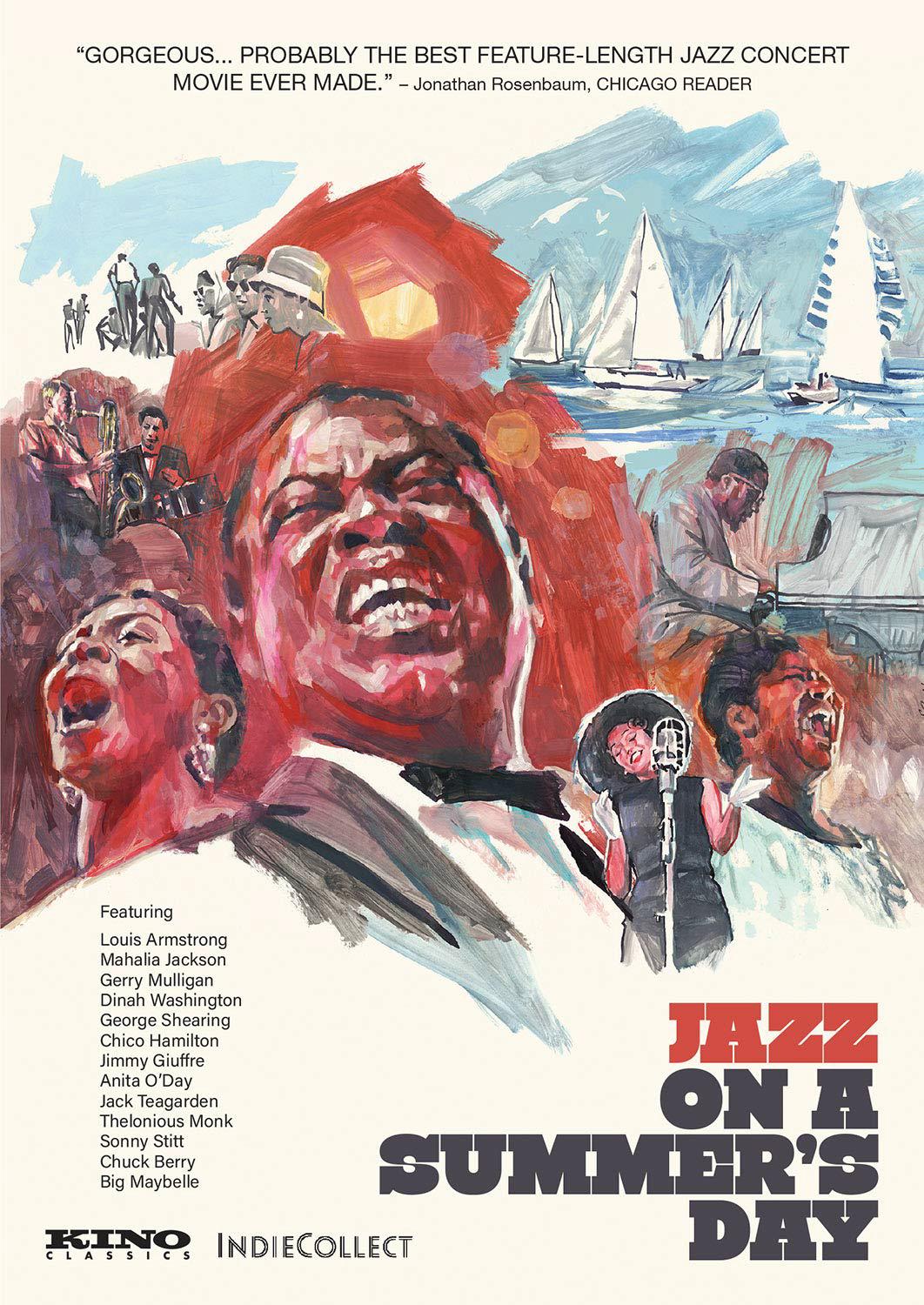
Wednesday, May 21, 2025
Doors open - 6:30PM Film Starts - 7PM
WJCT Studios
100 Festival Park Avenue Jacksonville, Florida 32202

As we all continue to navigate life and its numerous challenges, may we never be intimidated by the inevitable dispositions that might arise, and may we continue to show grace toward others as we take the steps in normalizing mental health disorders and illnesses.
Resources for mental health services: www.anxietyiswatchingme.com, www.jasmyn.org, www.anxietyresourcecenter.org, www.mind.org.uk, www.namijax.org, www.delraycenter.com, www.hearts4minds.org





From sunny Amelia Island down to the ancient streets of St. Augustine, a common topic permeates the minds and discussions of Northeast Floridians everywhere. What’s happening to our communities? Tales from older residents paint stories of untouched beaches dotted with small communities and country backroads. Now those beaches are overcrowded, the small communities have merged into megaliths of suburban sprawl, and the quaint country roads have been turned into endless developments. The zeitgeist of old Florida is dying as more people escape to this more affordable and sunny state. However, even now affordability is beginning to strain, and the storm clouds of devastating hurricanes are here to blow down perceptions. We must ask, how is Northeast Florida prepared to handle affordability, environmental preservation and traffic congestion in the face of worsening environmental disasters?
Remote workers, retirees, military, in-state and out-of-state movers, and other sorts of people across the United States have been flocking to Northeast Florida. The biggest counties in the First Coast have been enduring most of the population explosion. Through the 2010s, Duval County’s population increased 15.2%, Nassau County by 23.2%, and St. Johns County a staggering 43.9%. This population growth is expected to remain steady for years to come.
St. Johns County proves to be the most controversial with 350 housing developments in construction and housing prices soaring to a median price of $549,000 (and rising) countywide. To accommodate, housing has blasted off across Northeast Florida. These new homes have a positive effect by adding supply to the market which helps lower overall housing prices. However, due to the inherently poor design of the above-mentioned neighborhoods, they generate undue amounts of traffic, increase obesity rates and degrade Florida’s environment. These developments aren’t recreating the quaint neighborhoods of Riverside and Avondale or mirroring the ancient streets of St. Augustine. Rather, they are loosely connected McMansions stuck within disorienting mazes of sprawl splintered off six-lane “stroads.” Moreover, newly constructed apartments are built in the same blocky gentrification-style that sit in vast plains of asphalt between busy intersections. Those types of developments

feature sidewalks that lead nowhere, mandated green spaces with no good parks to visit, overly wide, winding streets built for cars — not kids. The American Planning Association (APA) has identified those designs as flawed. St. Johns, Duval and Nassau counties have incorporated solid ordinances on affordability measures and urban sprawl control; yet those ordinances do not seem to be adhered to or enforced. The lack of enforcement on upto-date urban designs places Northeast Florida’s ability to withstand disasters in jeopardy.
Environmental Preservation
From 2023 to 2024 home insurance premiums in Duval, Clay, St. Johns and Nassau counties rose by 14%. Citizens on average in Duval and St. Johns County are paying $4,000 annually in insurance premiums. Whether you believe in climate change or not, insurance companies are raising their rates for a reason. Florida has long been known as a thoroughfare for hurricanes, and these disasters are expected to increase in their ferocity and frequency. St. Johns County has taken the initiative in its 2050 Comprehensive General Plan to accommodate rising sea levels and environmental disasters. Even as local authorities plan for the environment, uninhibited rapid urban sprawl in the hinterlands has decreased the county’s ability to control flood waters.
This expansionist growth is much of the same across Northeast Florida. No matter how much “green space” is mandated for water runoff or how many stormwater retention ponds are required, they will never be enough to hold back the devastating effects of a major flood. These controls cannot replace the swamp that is meant to be there. It is extremely short-sighted to exchange the sponge-like effects of wetlands for traffic flow, empty grass fields or McMansions. Local authorities may plan for floods all they want, but allowing substandard urban designs to swallow up the environment will exacerbate future disasters. Unchecked sprawl doesn’t just compromise natural flood defenses; it also compromises traffic flow.
Substantial population growth comes with substantial traffic congestion, which has become a way of life lately. Annual mobility reports from the North Florida Transportation Planning Organization (NFTPO) across four counties in Northeast Florida estimate that vehicle-miles traveled increased 10.6% from 2006 to 2019, meaning collectively more vehicles have been placing stress on roads, bridges and air-quality. NFTPO plays a crucial role in the coordination of federal, state and local organizations in Northeast Florida’s roadway expansion and maintenance. The 2045 Long-Range plan pushed by NFTPO has provisions for reducing car dependency by paying lip service to other transportation options such as walking, bus rapid transit, cycling, and even commuter rail. However, the plan is extensive in its focus on vehicle traffic with the explicit intention of widening roadways. These sycophantic obsessions with the flow of traffic by paving for more roadways have an inane loop of actually causing more traffic in the long term through a process called induced demand. When congestion gets bad, policymakers expand roadways. As new capacity appears, congestion eases until drivers adjust by shifting travel times, increasing trip frequency and moving farther from urban centers — ultimately renewing previous congestion levels. As an example, the Katy Freeway in Houston, which features 26 lanes, continues to expand but fails to bring down commute time long-term. It appears policymakers in Northeast Florida follow Houston’s example by not heeding its warning. There are obvious things Northeast Florida must implement in the coming years.
Municipalities along with regional planning agencies need to prioritize up-to-date urban planning and design standards, genuine environmental preservation and divestment from roadway expansions. Those practices will preserve the character of Northeast Florida while accommodating newcomers. As much as this column should end on a positive note, let us be honest. The above-mentioned things are not going to happen because our leaders are more motivated to deal with recent problems with old tricks. Whether it is the lack of political willpower or sheer ignorance of basic planning principles, our paradise is going to be paved with parking lots, outlet malls and McMansions. Traffic congestion up to the gills, along with the constant humdrum of stroads will be the issues future leaders will deal with because of the impotence of current-day policymakers. These issues don’t mark the end of the world as we know it but will pose difficult hurdles for future generations to overcome.





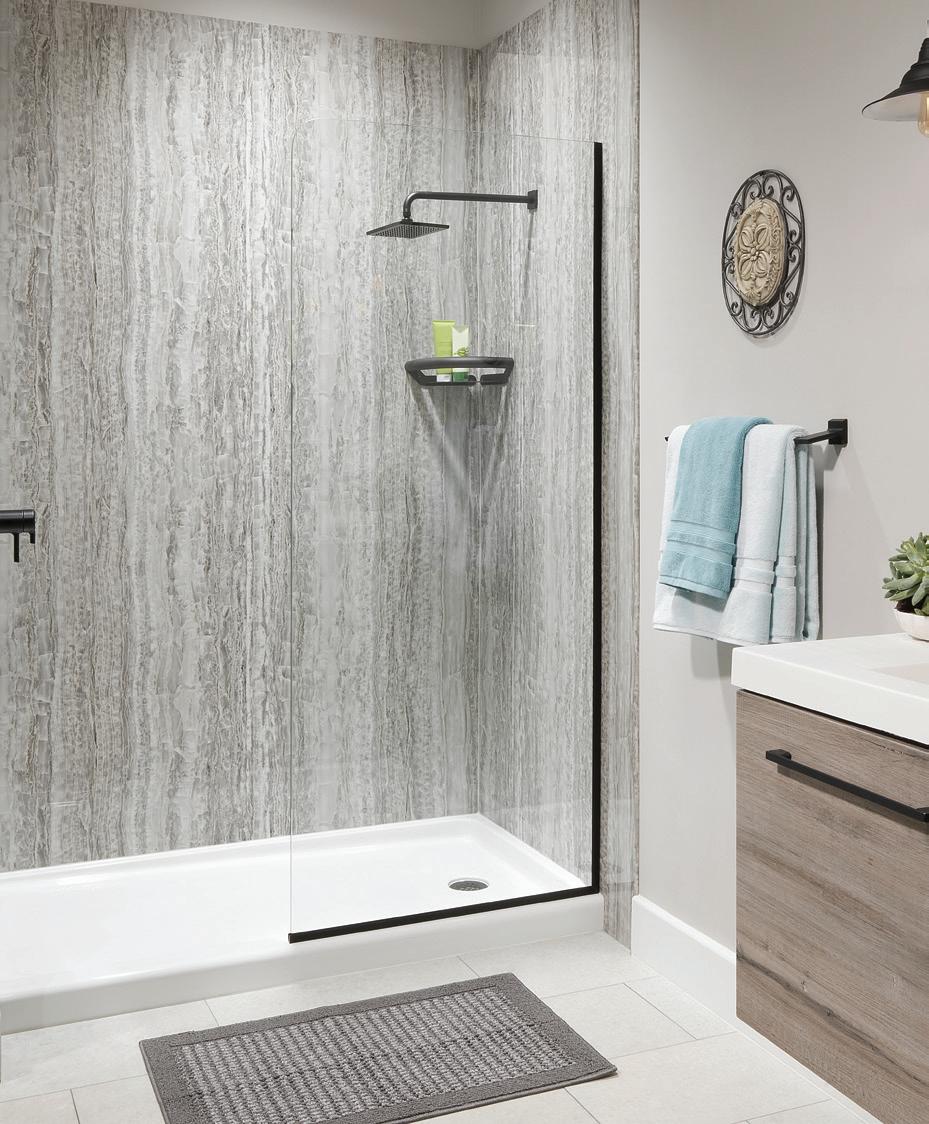





Words
& photo by
Kaili Cochran

Winding its way through Florida for 310 miles, the St. Johns River is the longest river in the state, with about 3.5 million people living along its riverbanks.
It’s one of the few rivers in the entire country to flow north. This is because its starting point is 27 feet higher in elevation than where it ends, pushing it in the opposite direction. Before emptying into the Atlantic Ocean, the river flows through Jacksonville for its last 35 miles.
Its connection to the Atlantic Ocean brings in dolphins and manatees, which are common sightings throughout the river, especially during the winter months when they seek out warmer waters.
The St. Johns is considered one of the “laziest“ rivers in the world, dropping 30 feet over its entire course. Lazy rivers like this provide a slow flow and make it even easier to spot wildlife as you travel along the river.
There are many activities that involve being on or near the St. Johns River. Many locals go on the water by boat, kayak and jet ski. Fishing is also a popular sport, whether from the shoreline or out on the river. Some common catches include flounder, blue crab and the Mayport shrimp.
Even if fishing isn’t your thing, you can still enjoy some of these catches at local restaurants such as Palms Fish Camp and Safe Harbor Seafood Restaurant. Both also offer outdoor dockside seating where you can enjoy your meal with a view of the water.
In Downtown Jacksonville, the Riverwalk goes along both the Northbank and Southbank, giving walkers and runners a trail with a view beside the river. Events are also a common occurrence near the Southbank, including a Sip & Stroll, which takes place on every third Thursday of the month, and the Riverside Arts Market, held every Saturday.
All of these activities are perfect for when it’s summer and you’re looking to be or on by the water. But even when summer comes to an end, more events take place right on the water year-round. In September, the RiverFest takes over the waterfront for a weekend of live music, food and support for the Have A Heart For Michael Foundation. In December, the Jacksonville Light Boat Parade takes place, where boats are fully decorated in lights and festive blow-ups and float down the river.
What began as a transportation route has become that and much more. For those who live nearby, the St. Johns is more than just a river, it’s a natural attraction for Northeast Florida culture and community.


this puzzle like a regular sudoku, but instead of using numbers, use the letters (and dot) K-.-U-T-I-E (for the local singer-songwriter) to fill each row, column and box.
